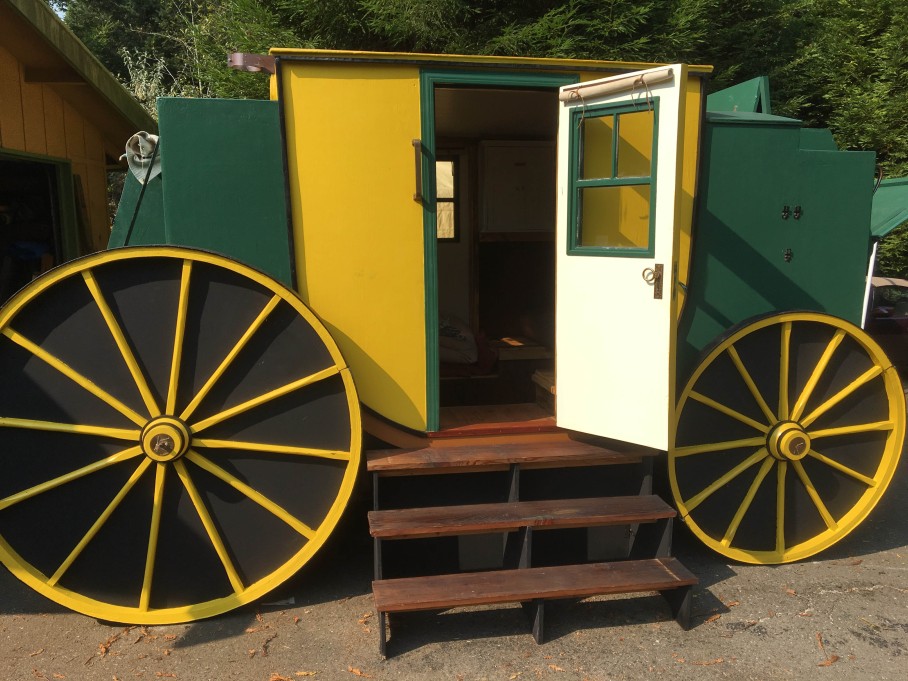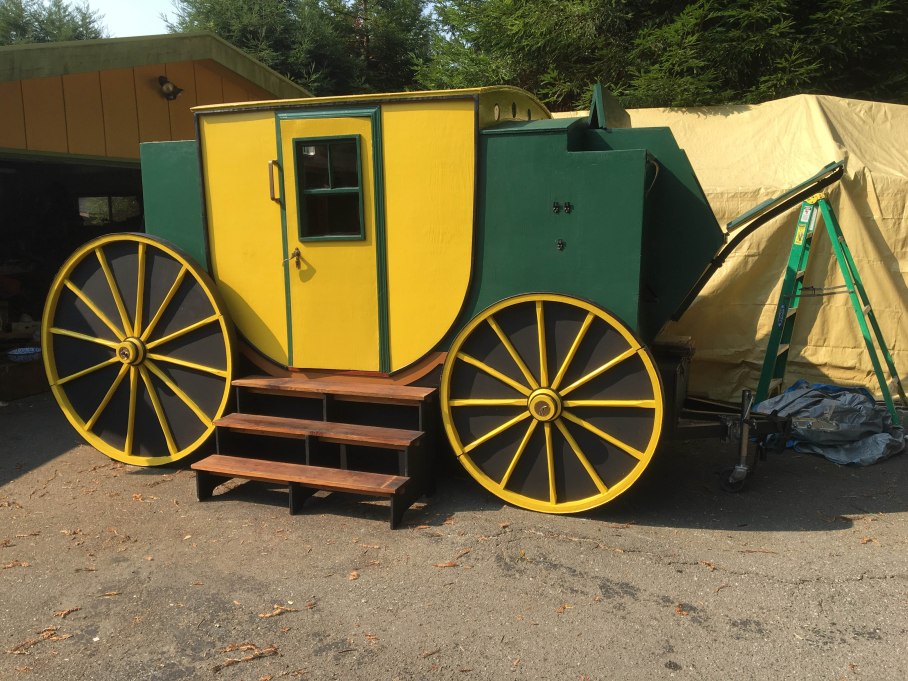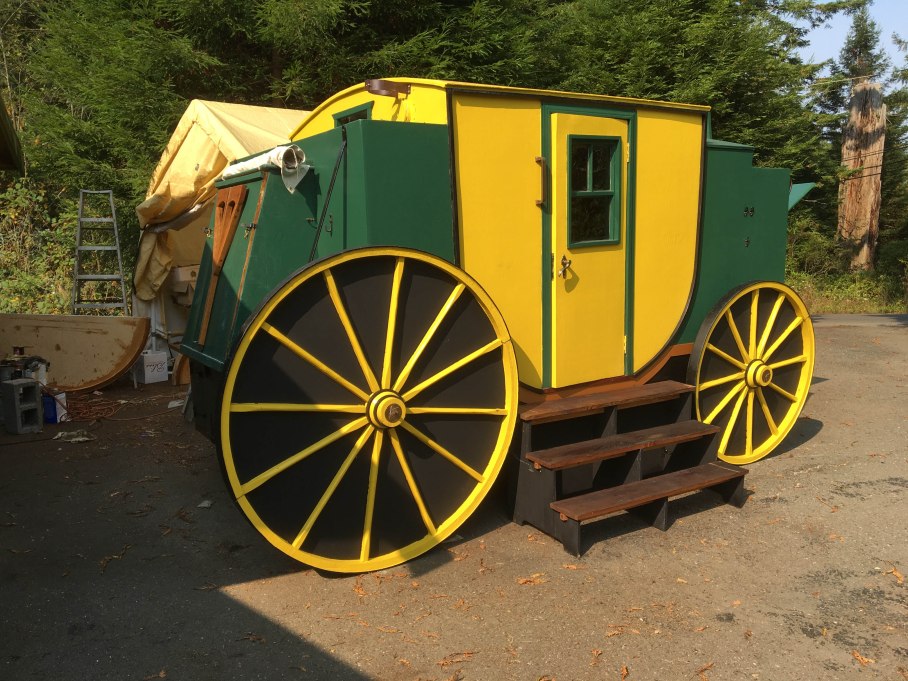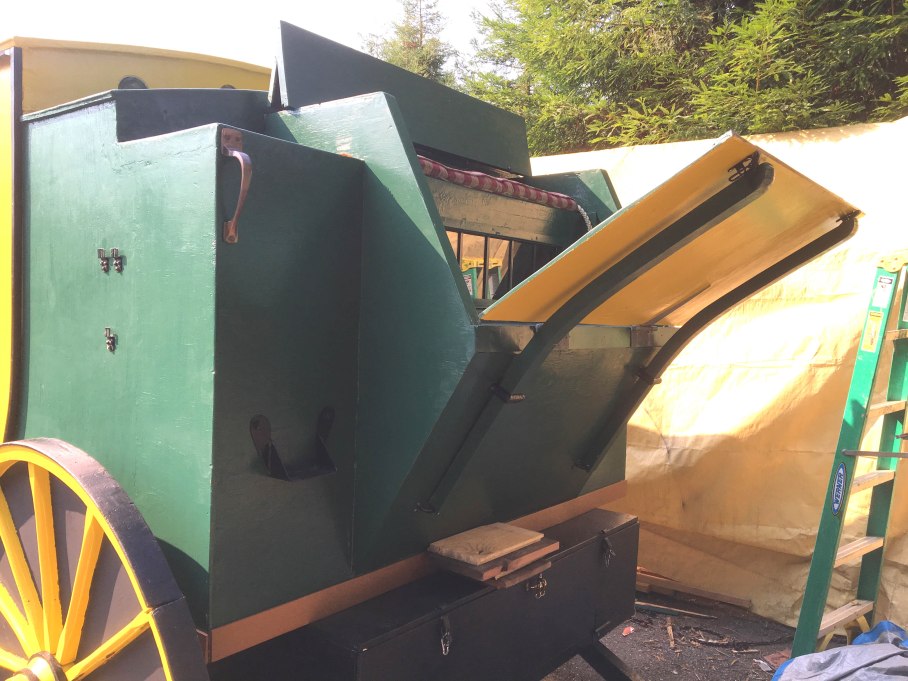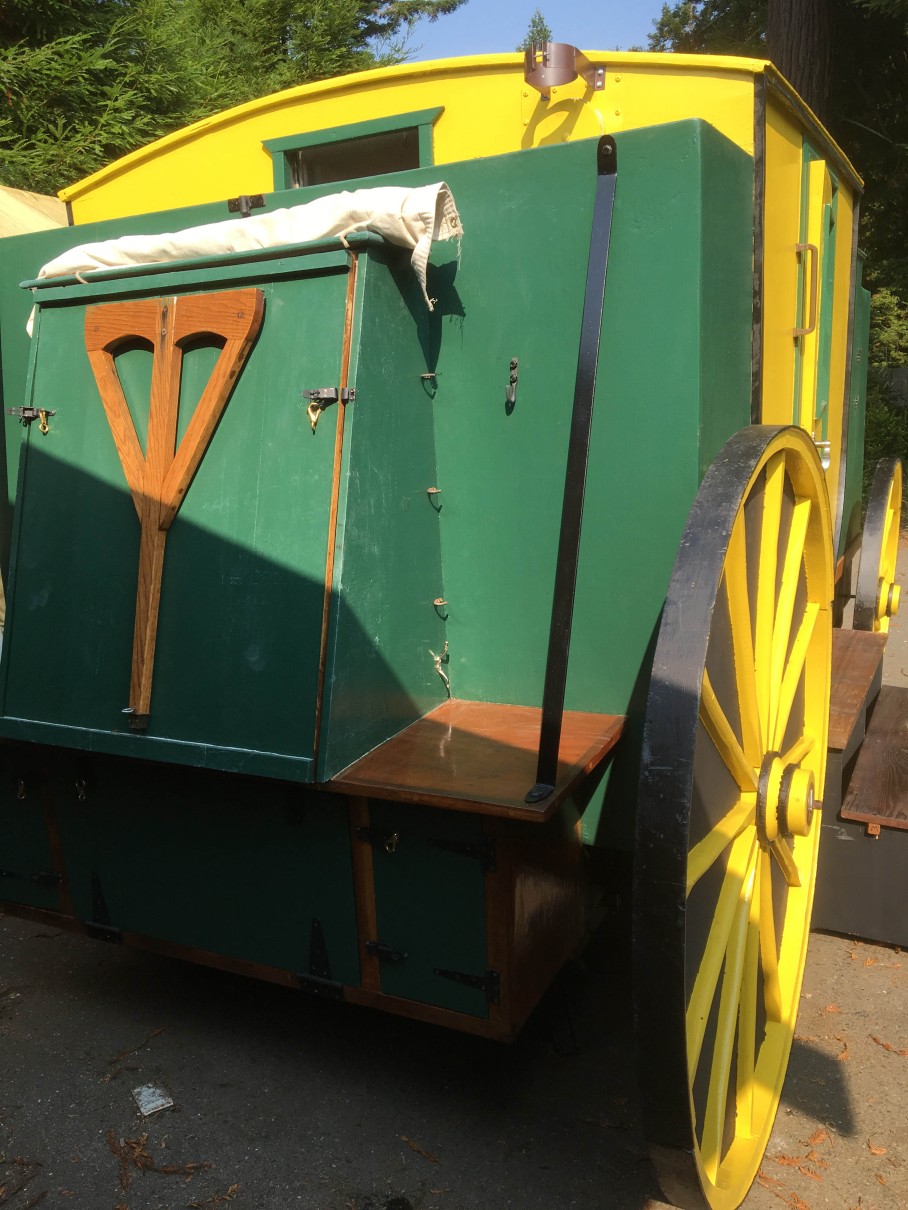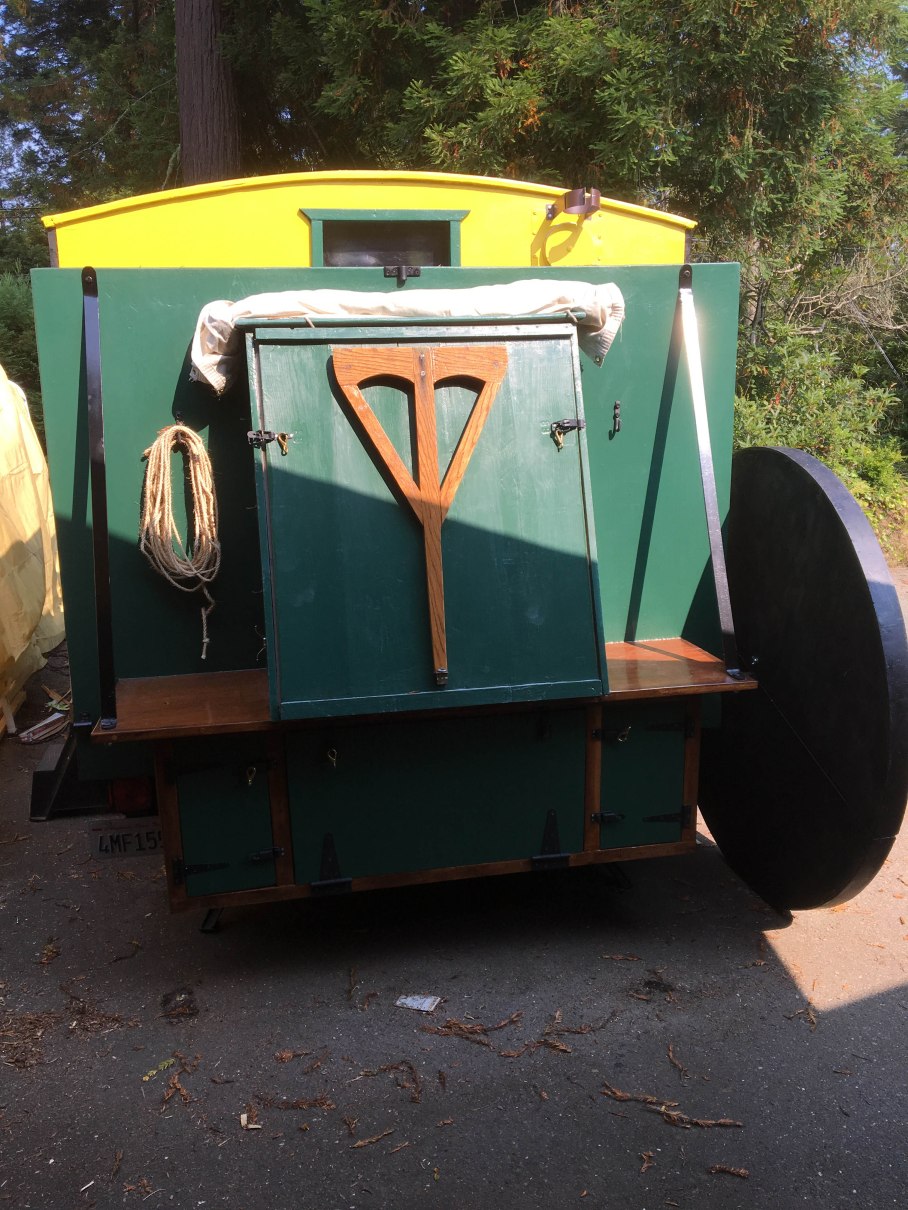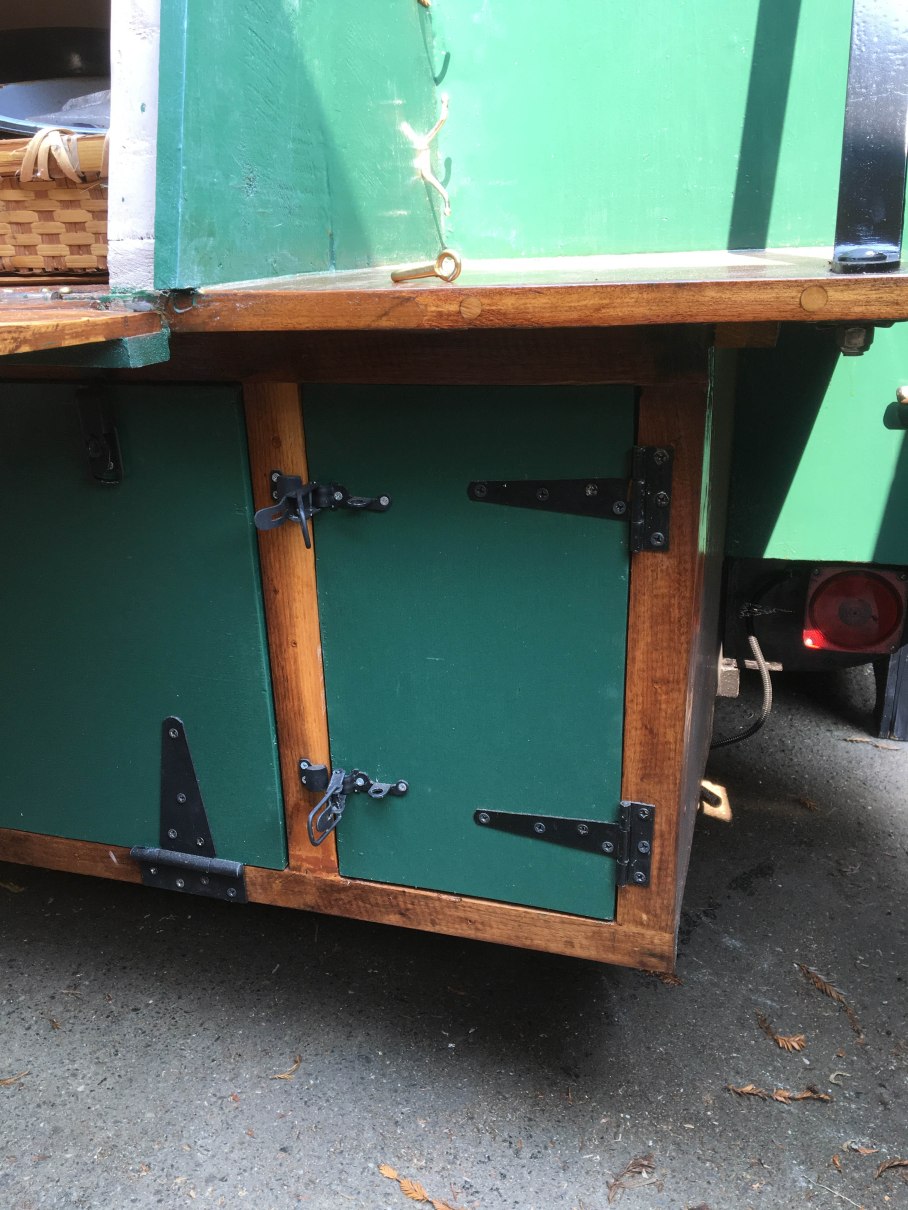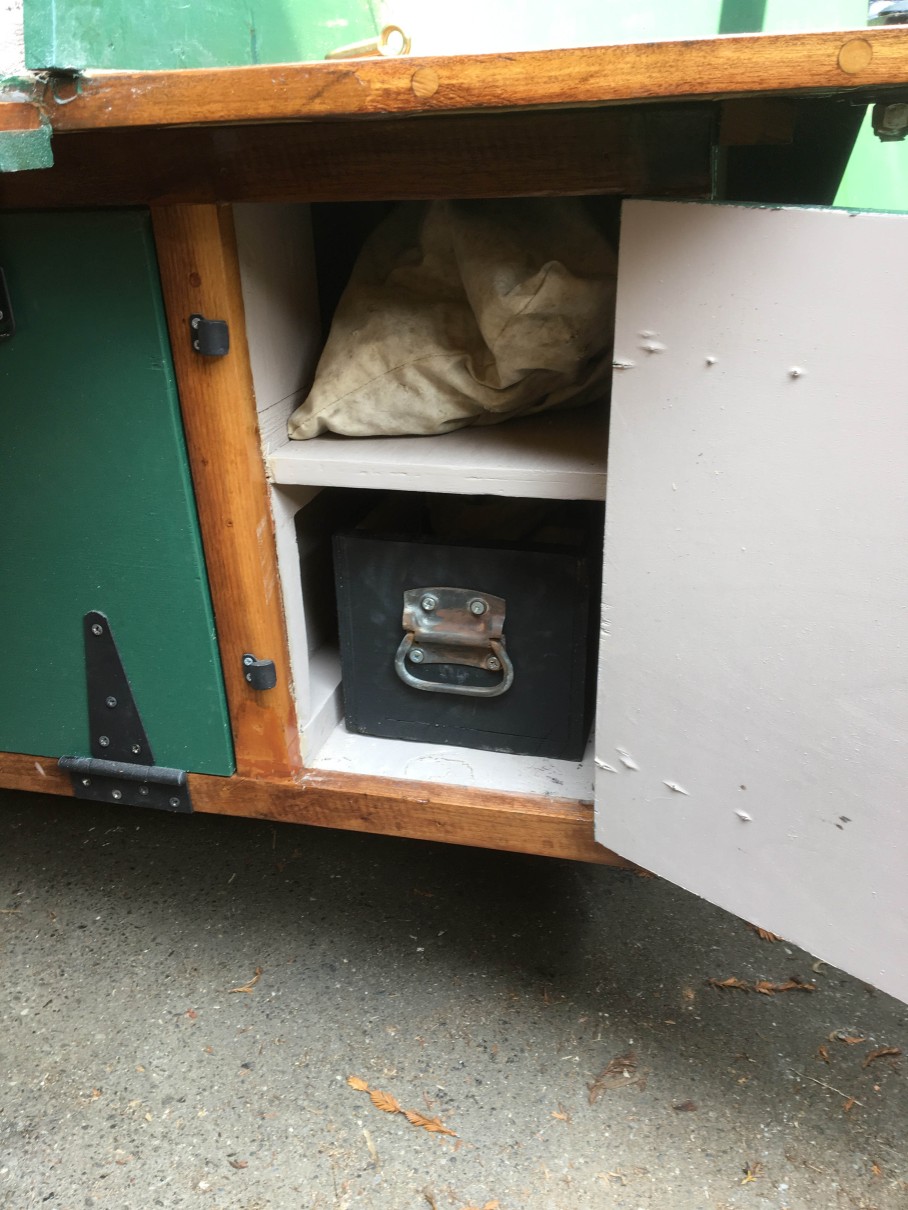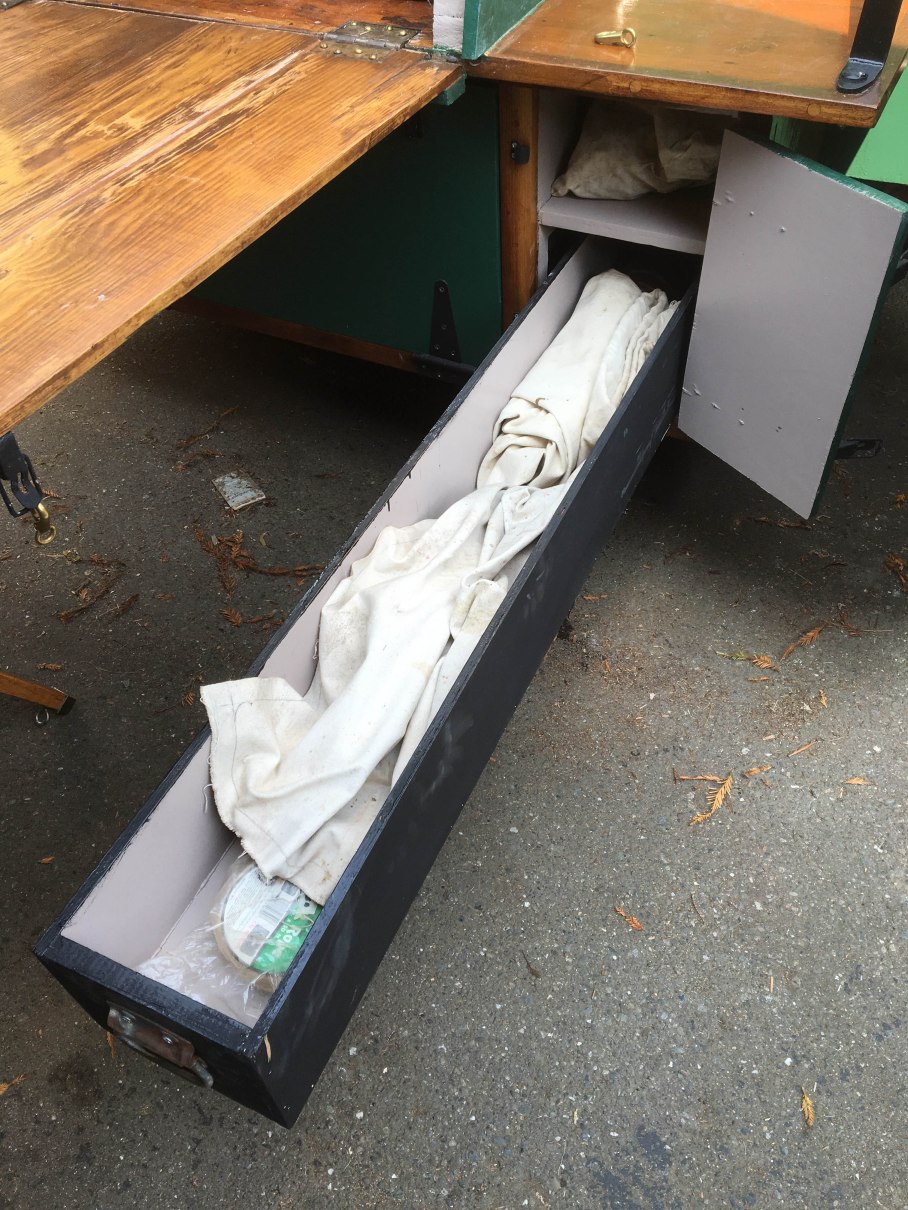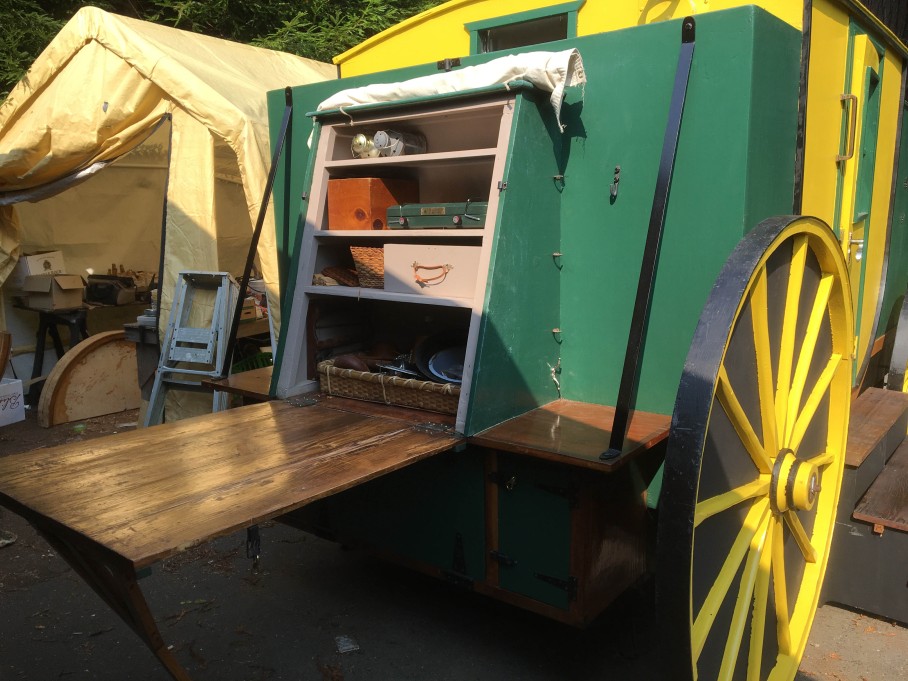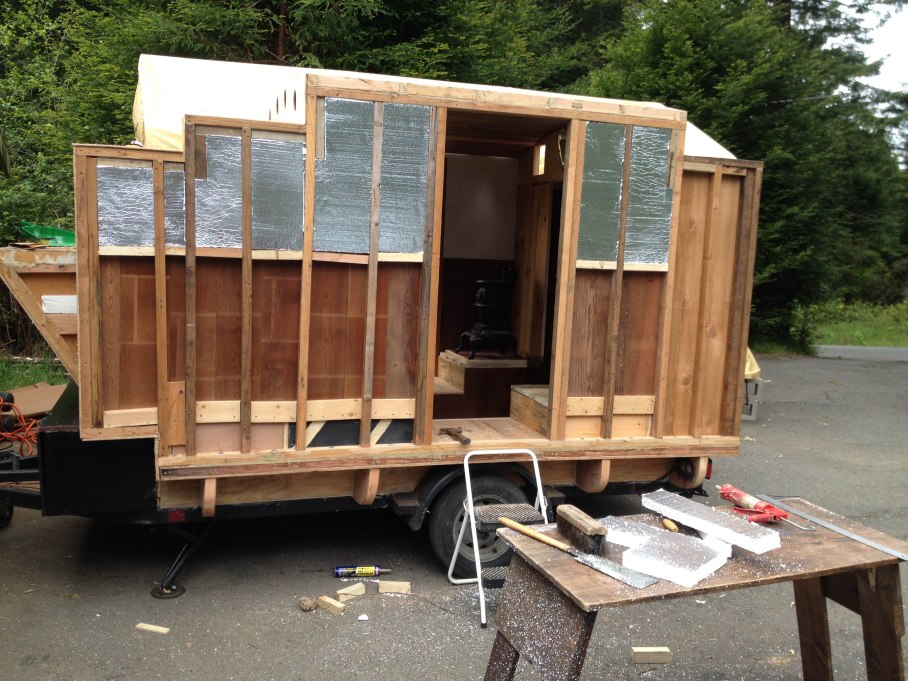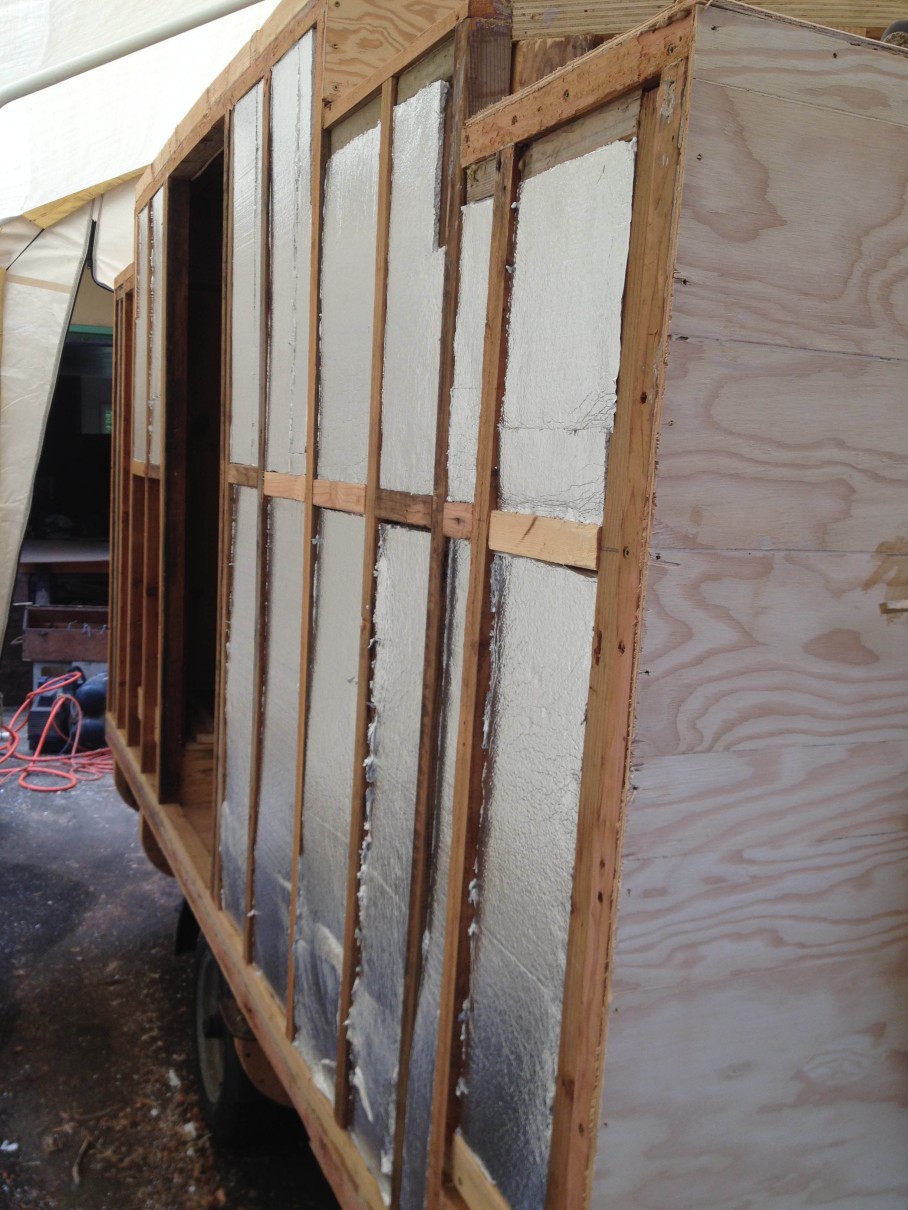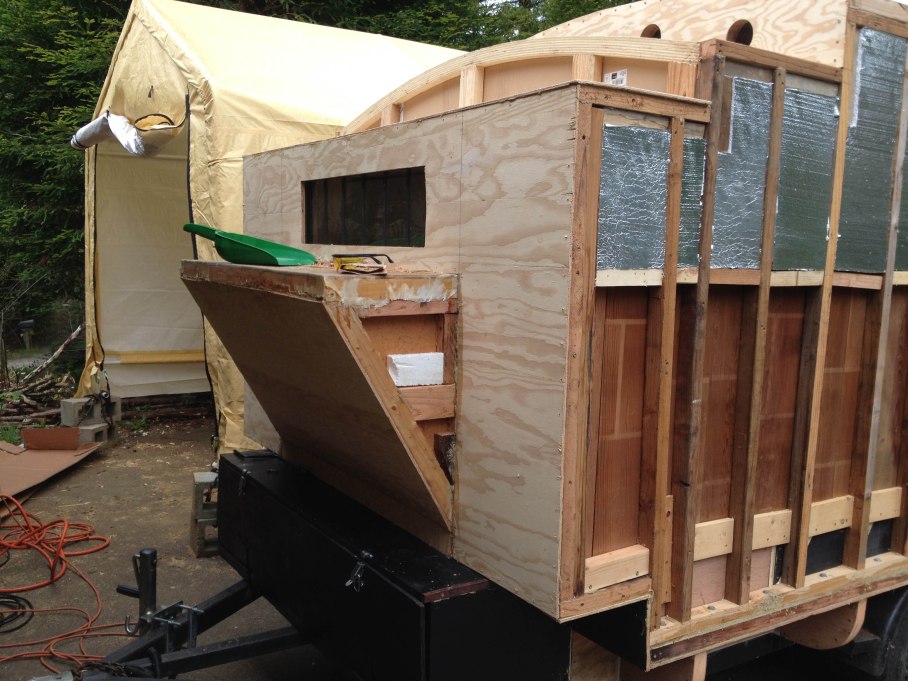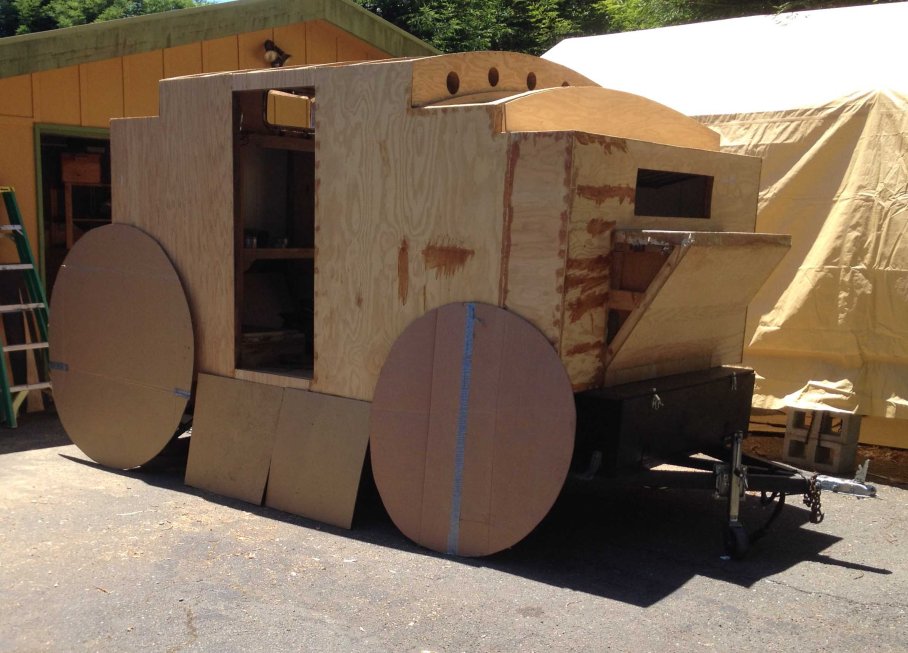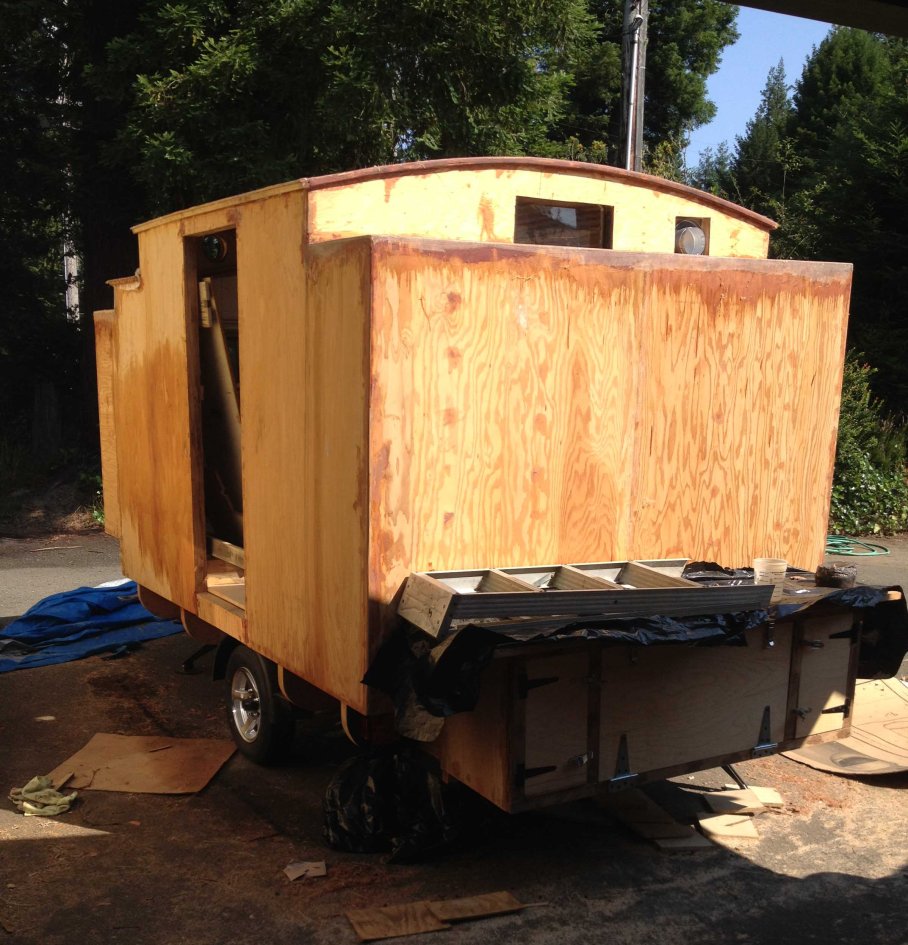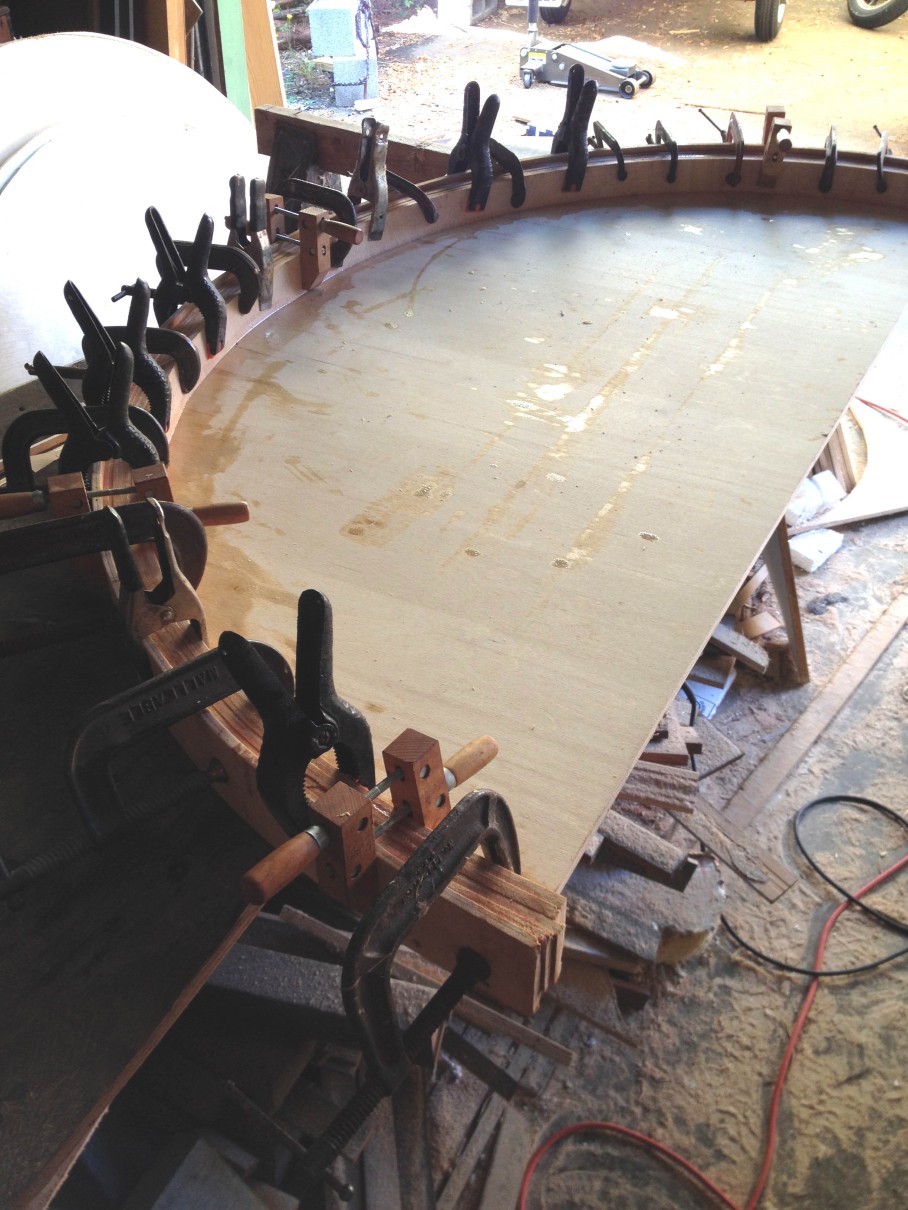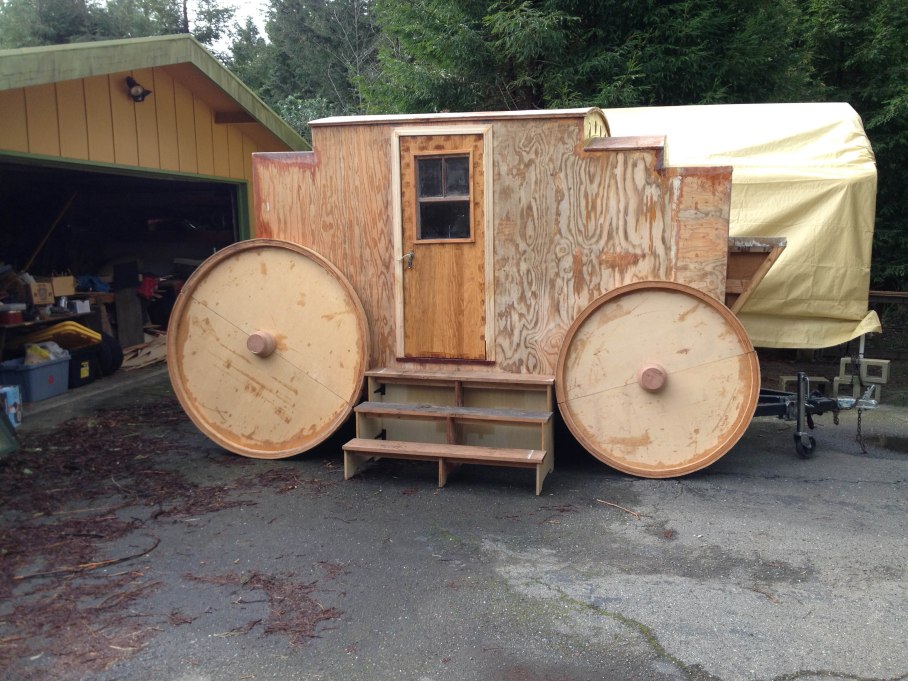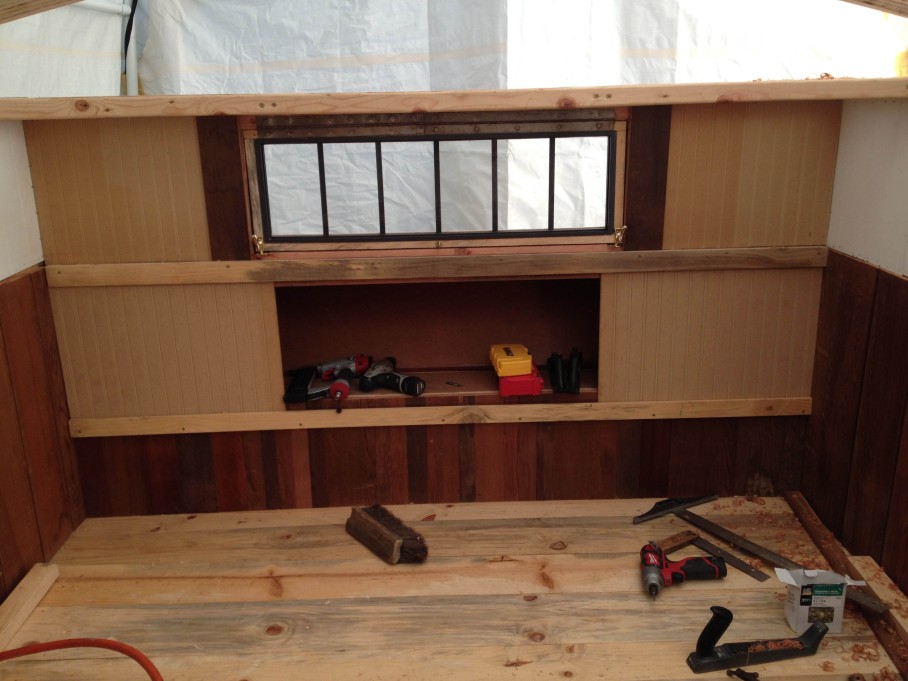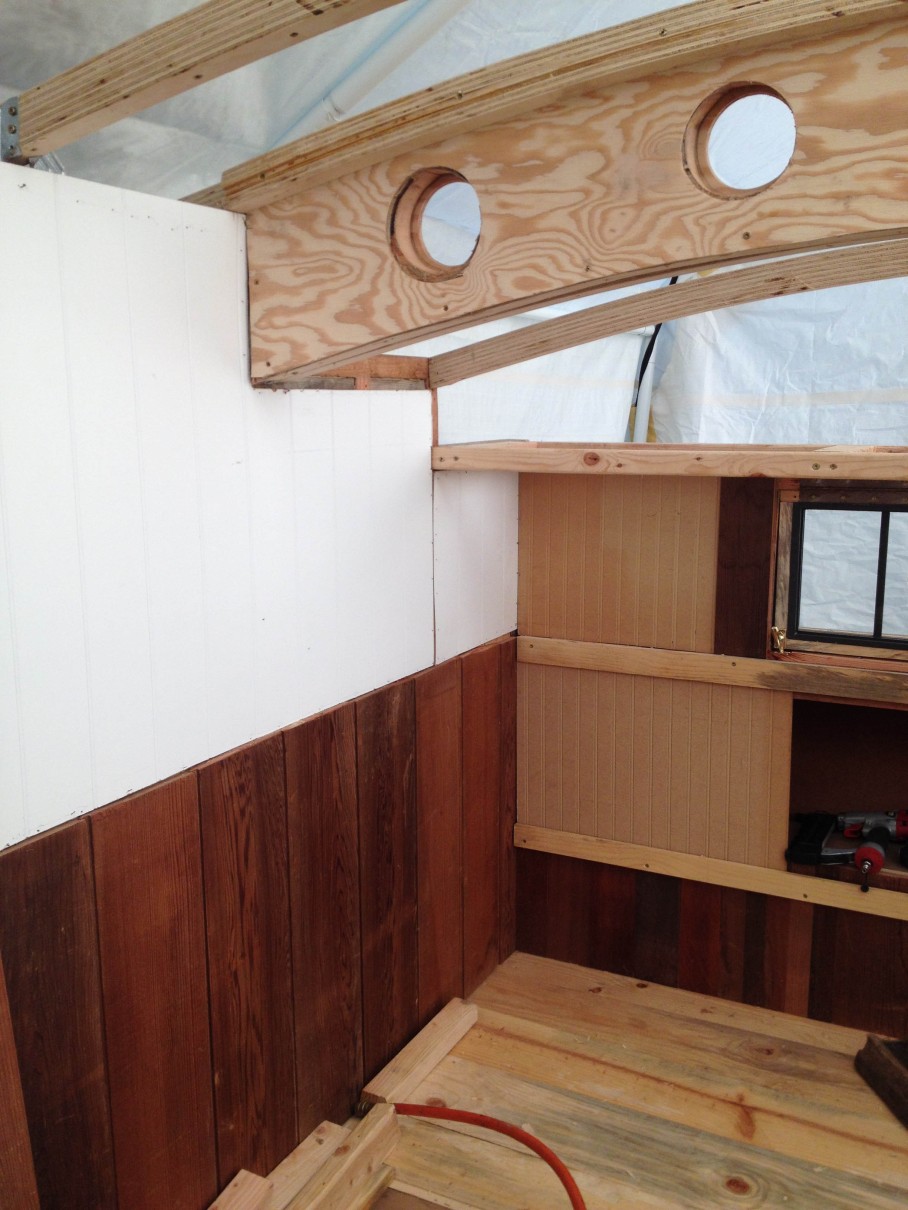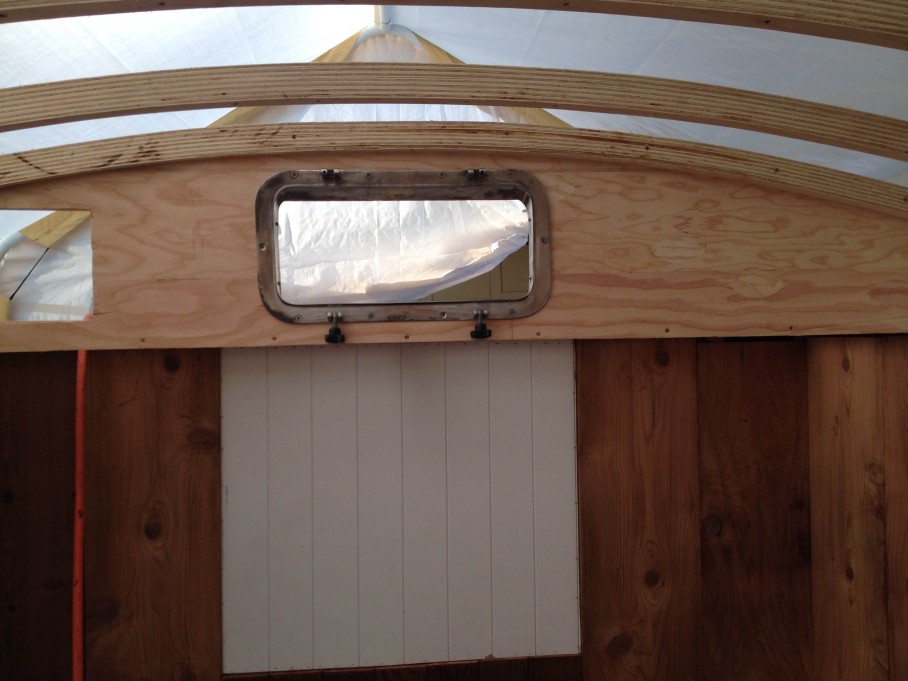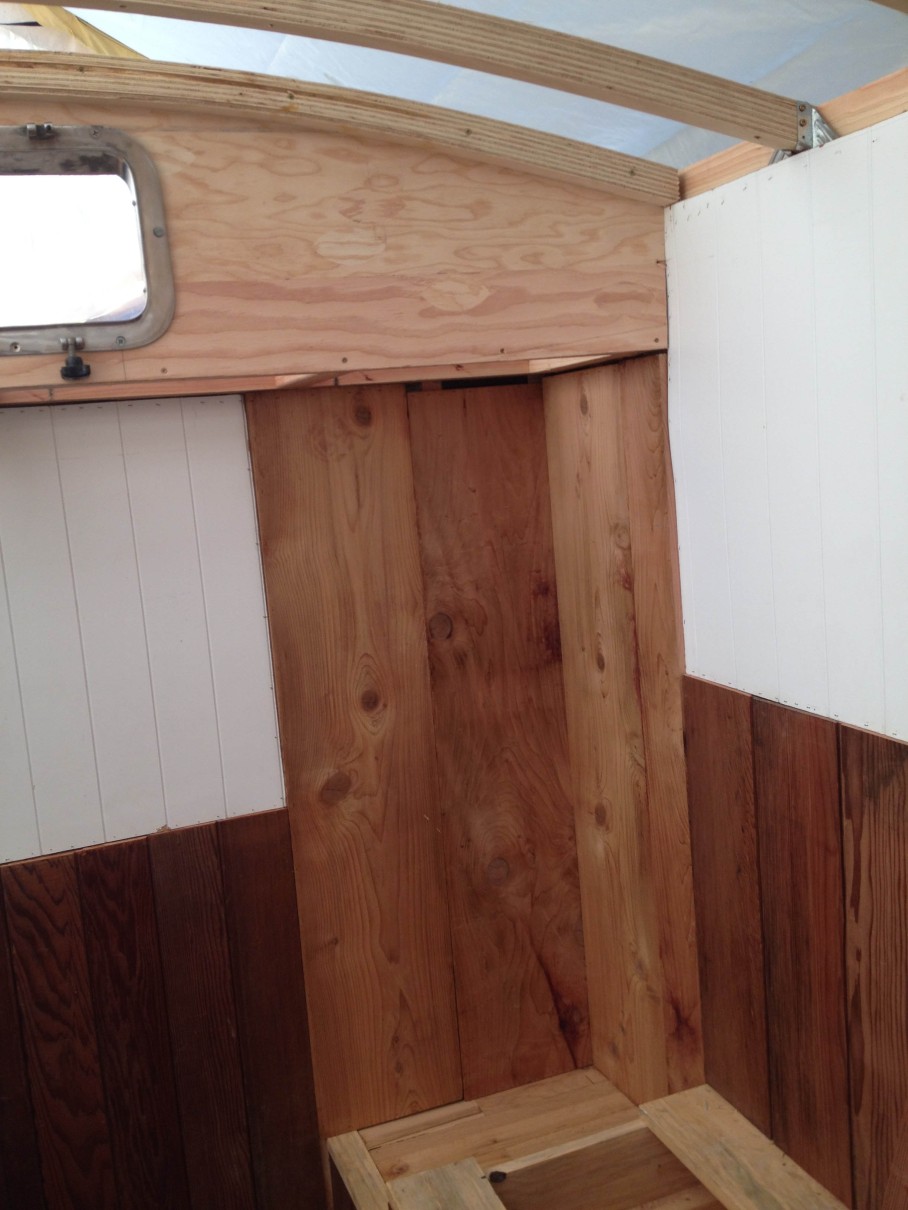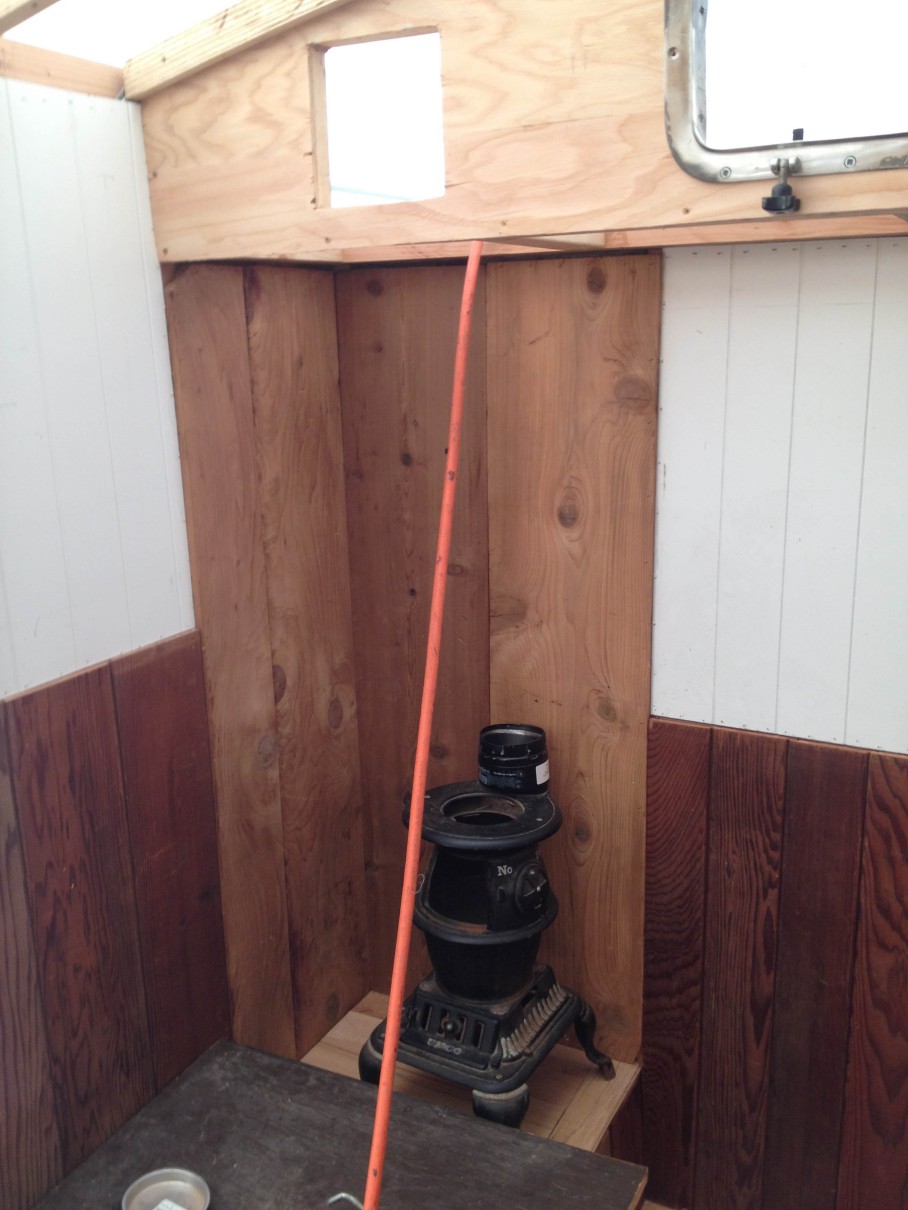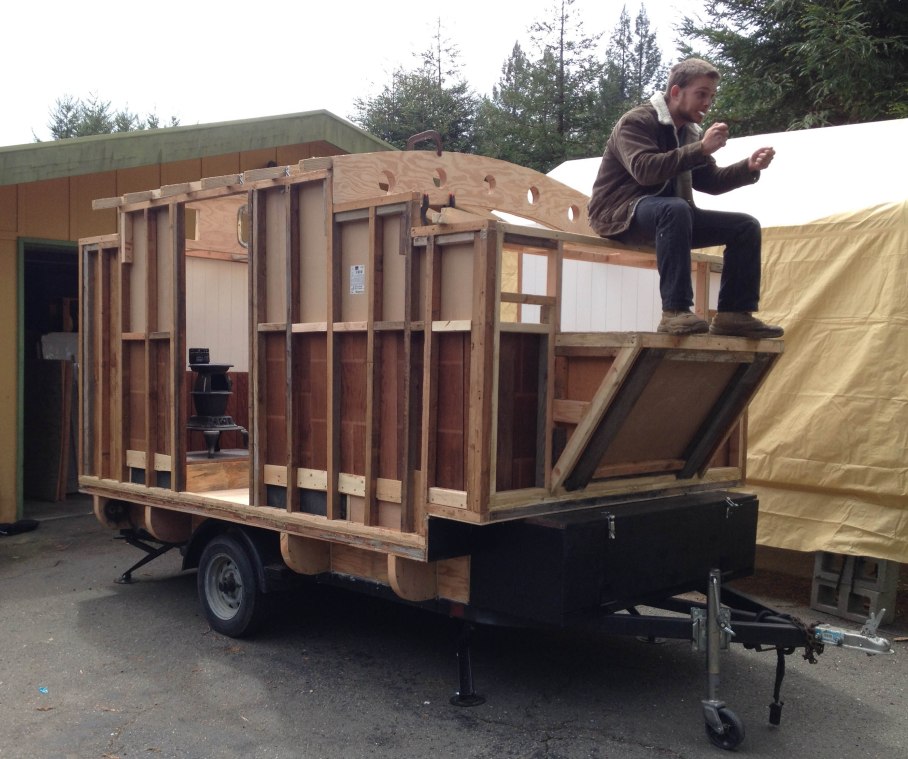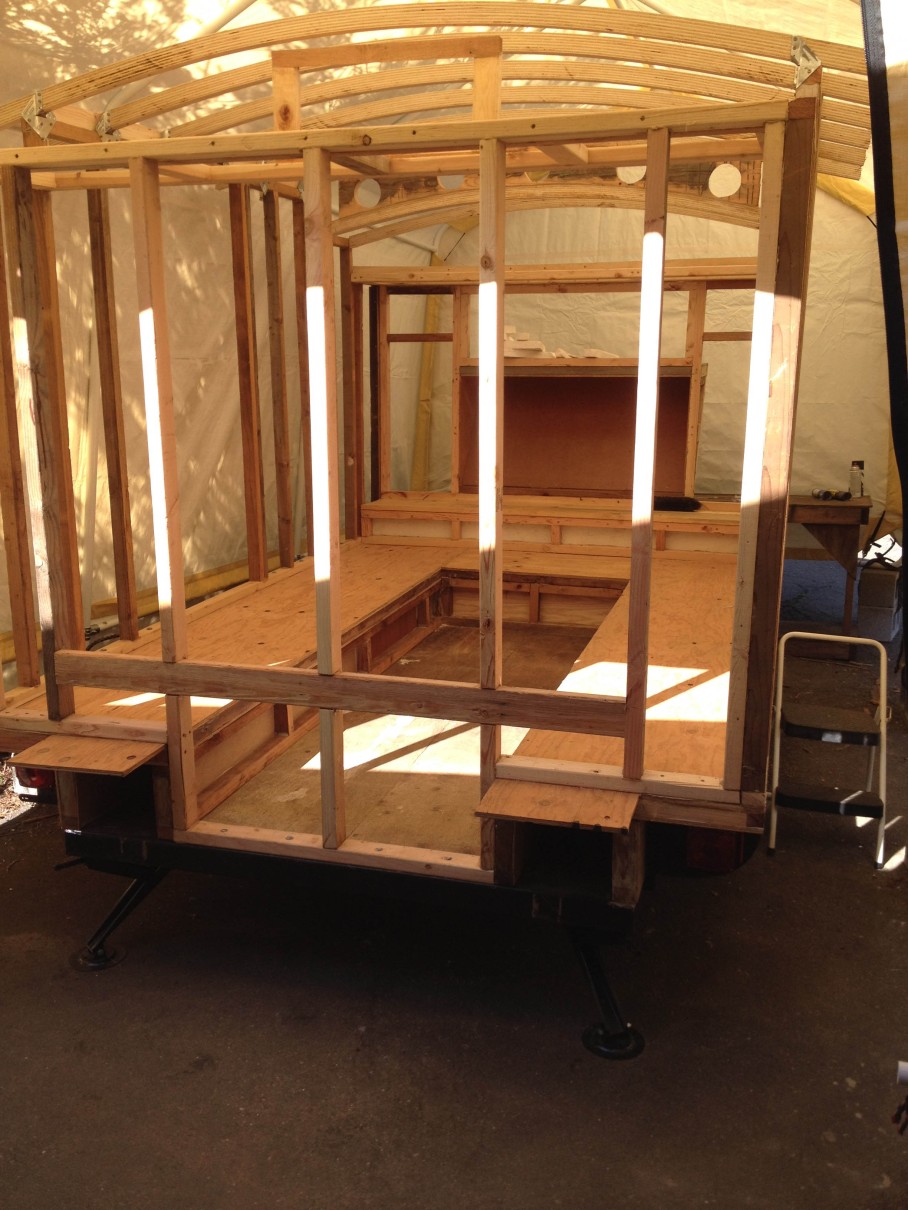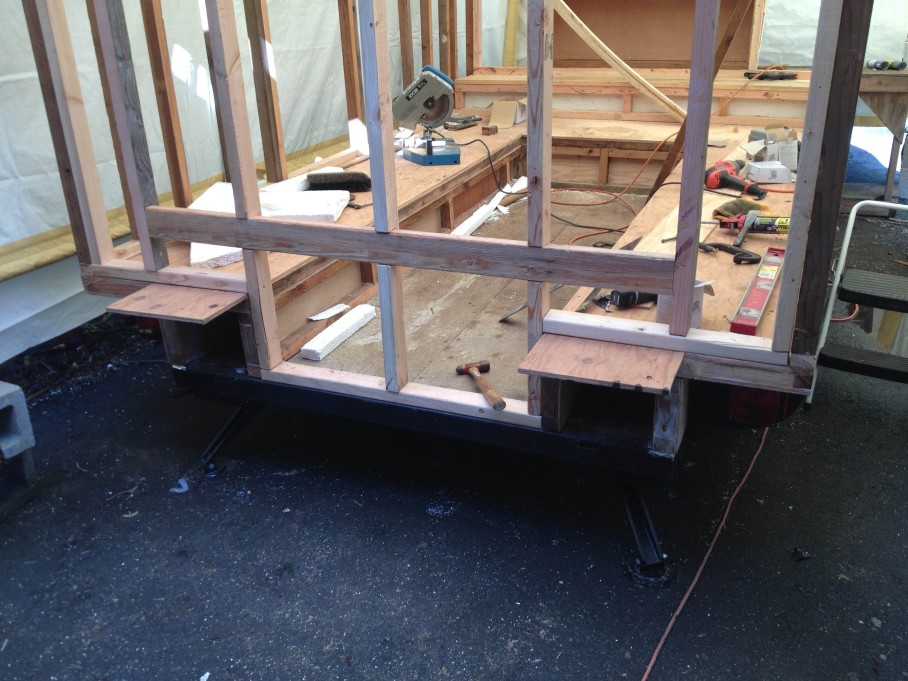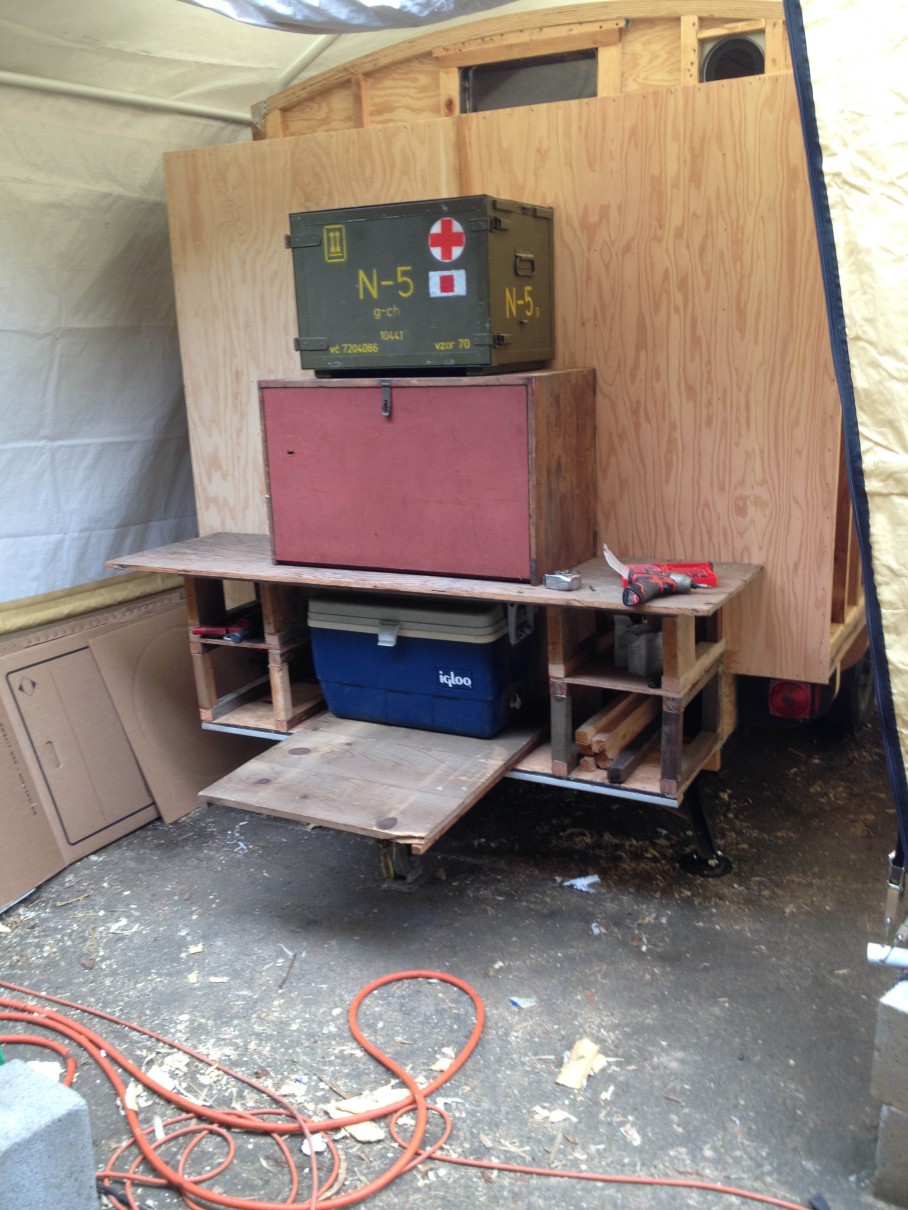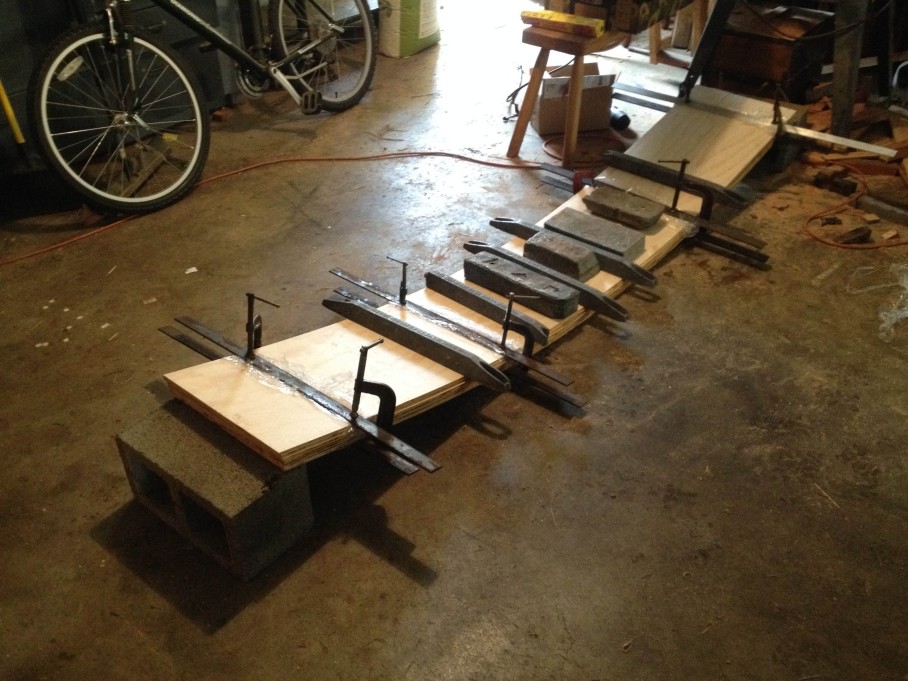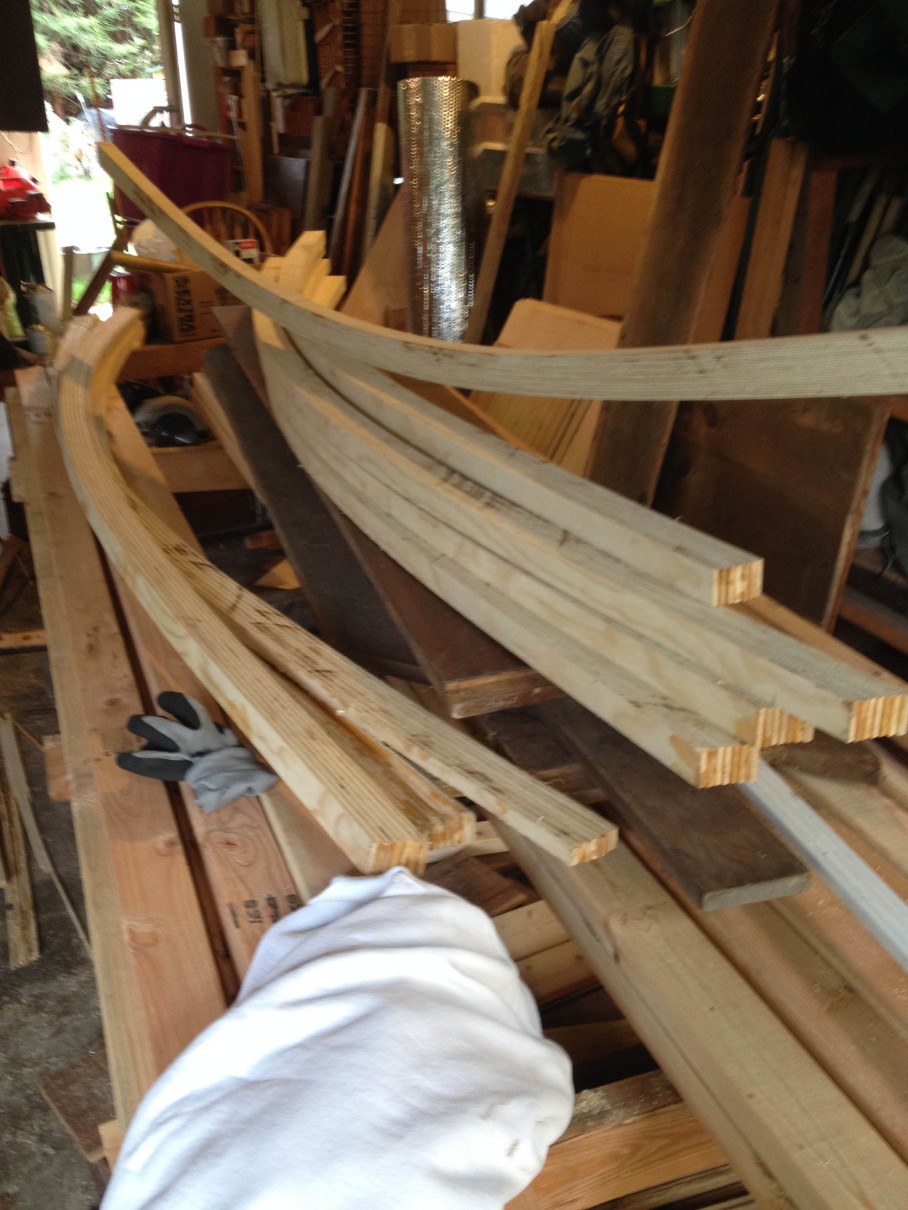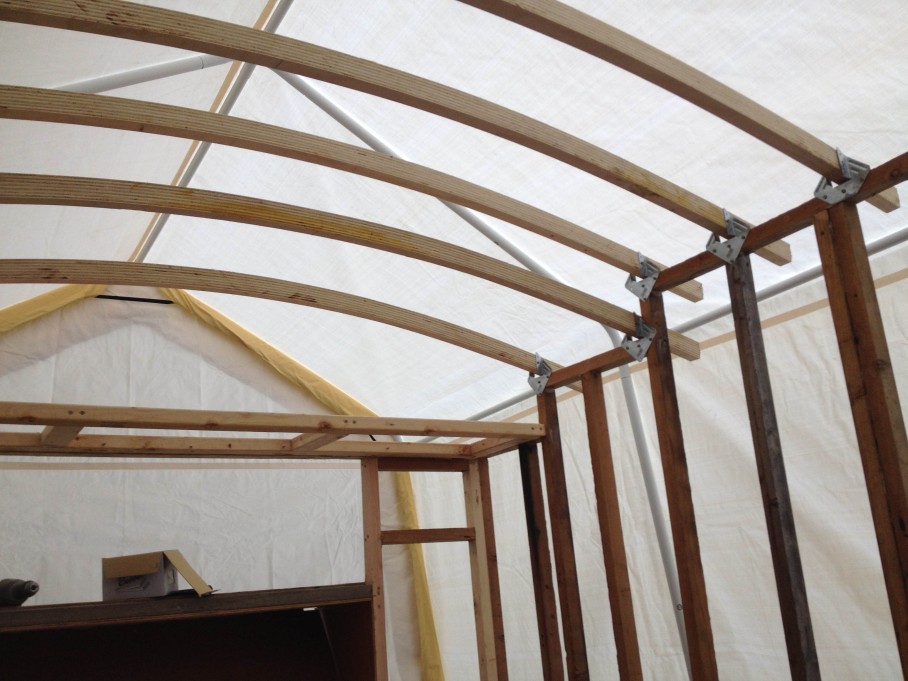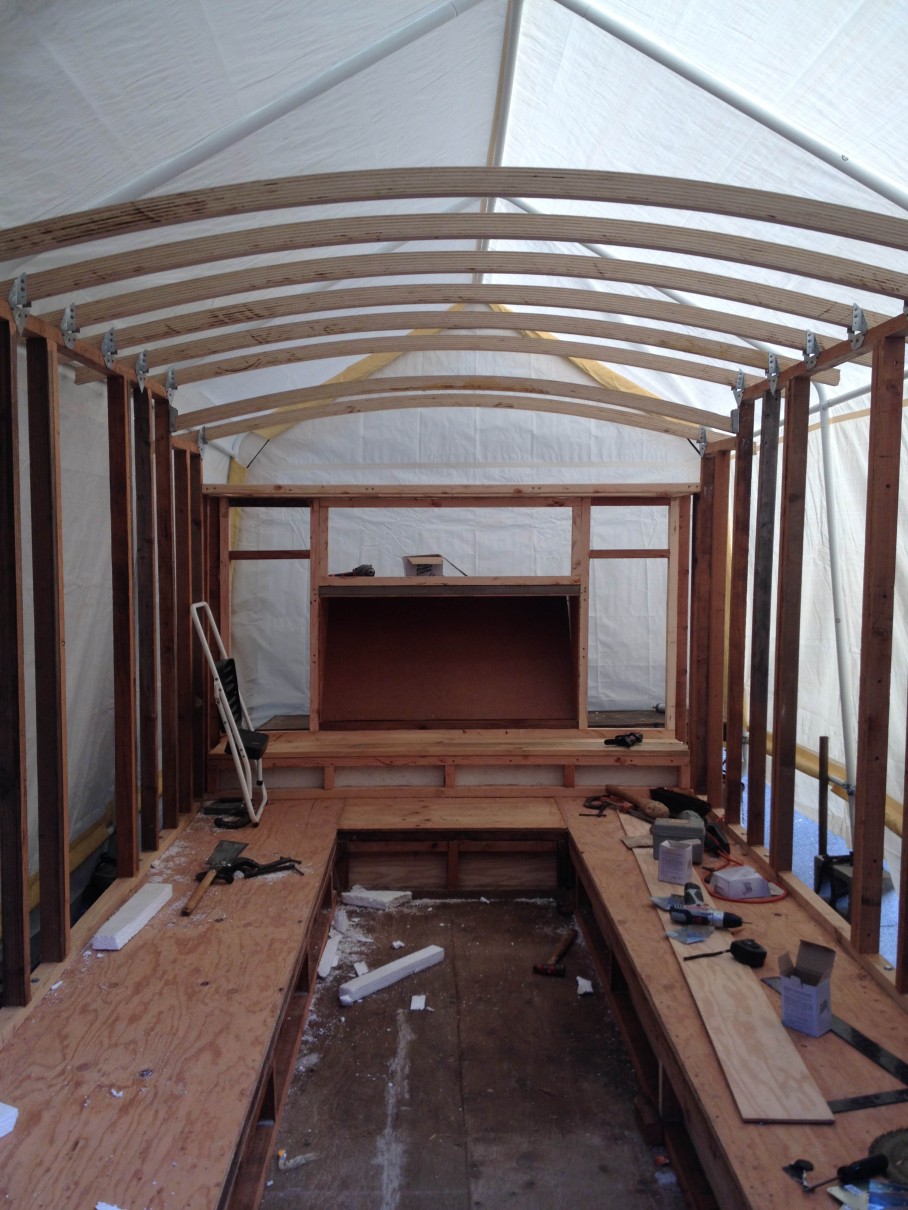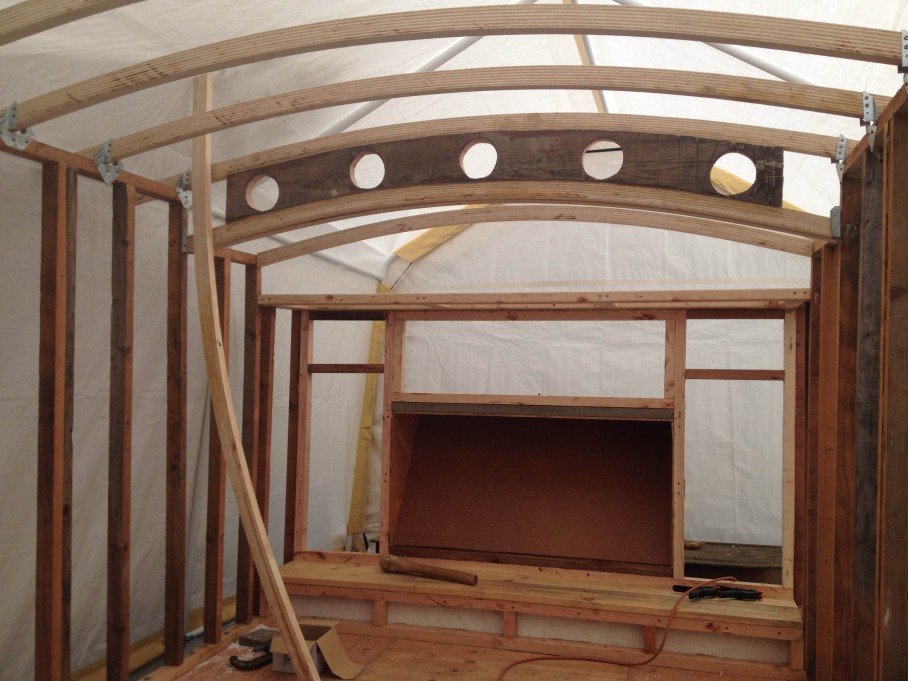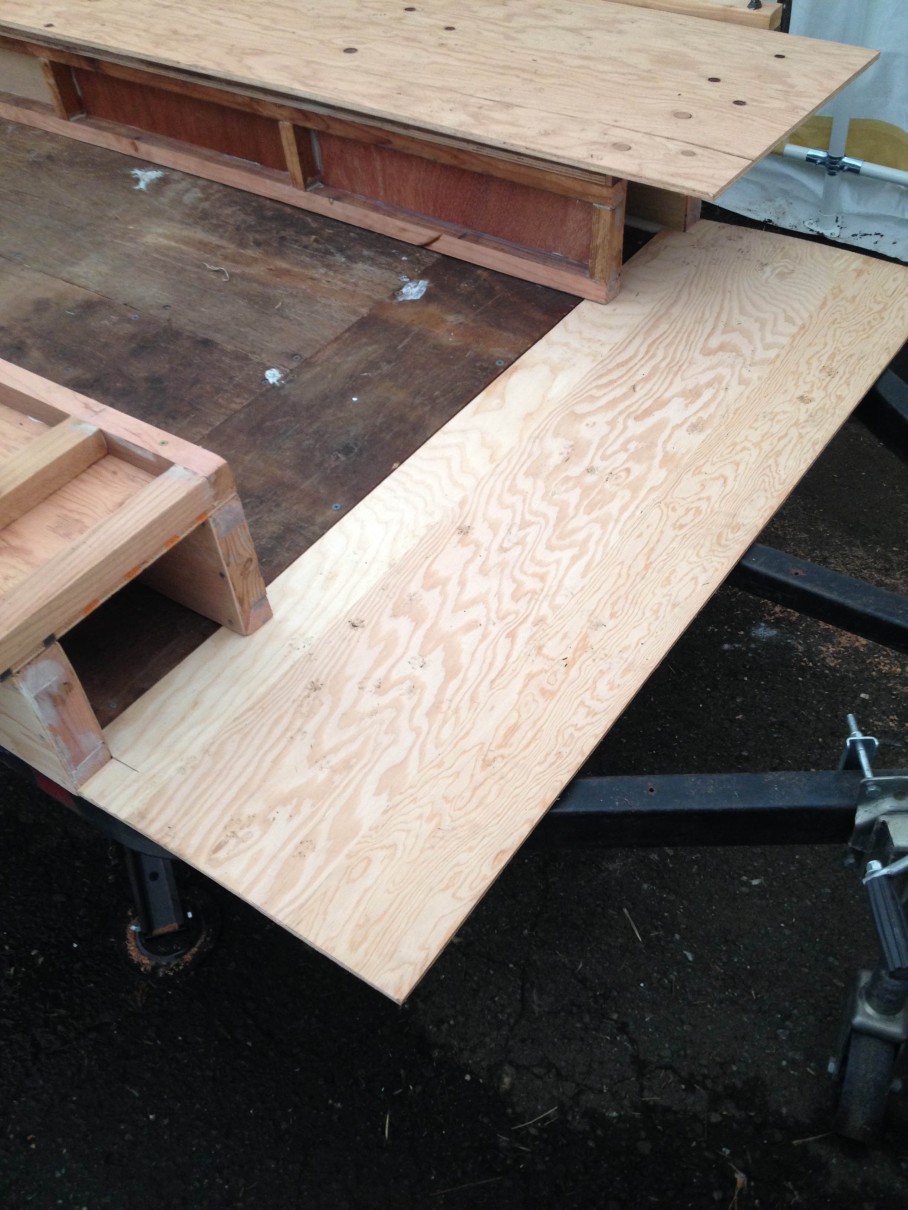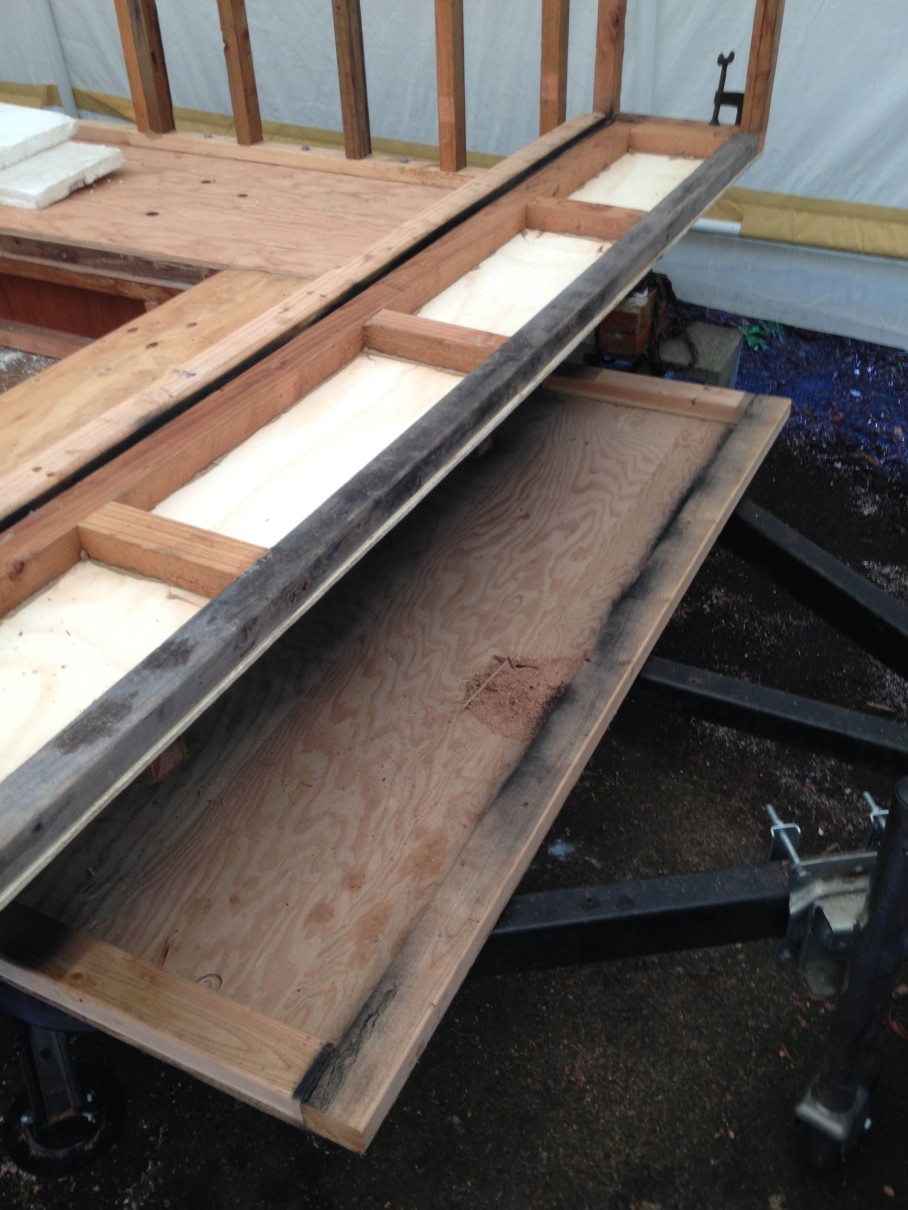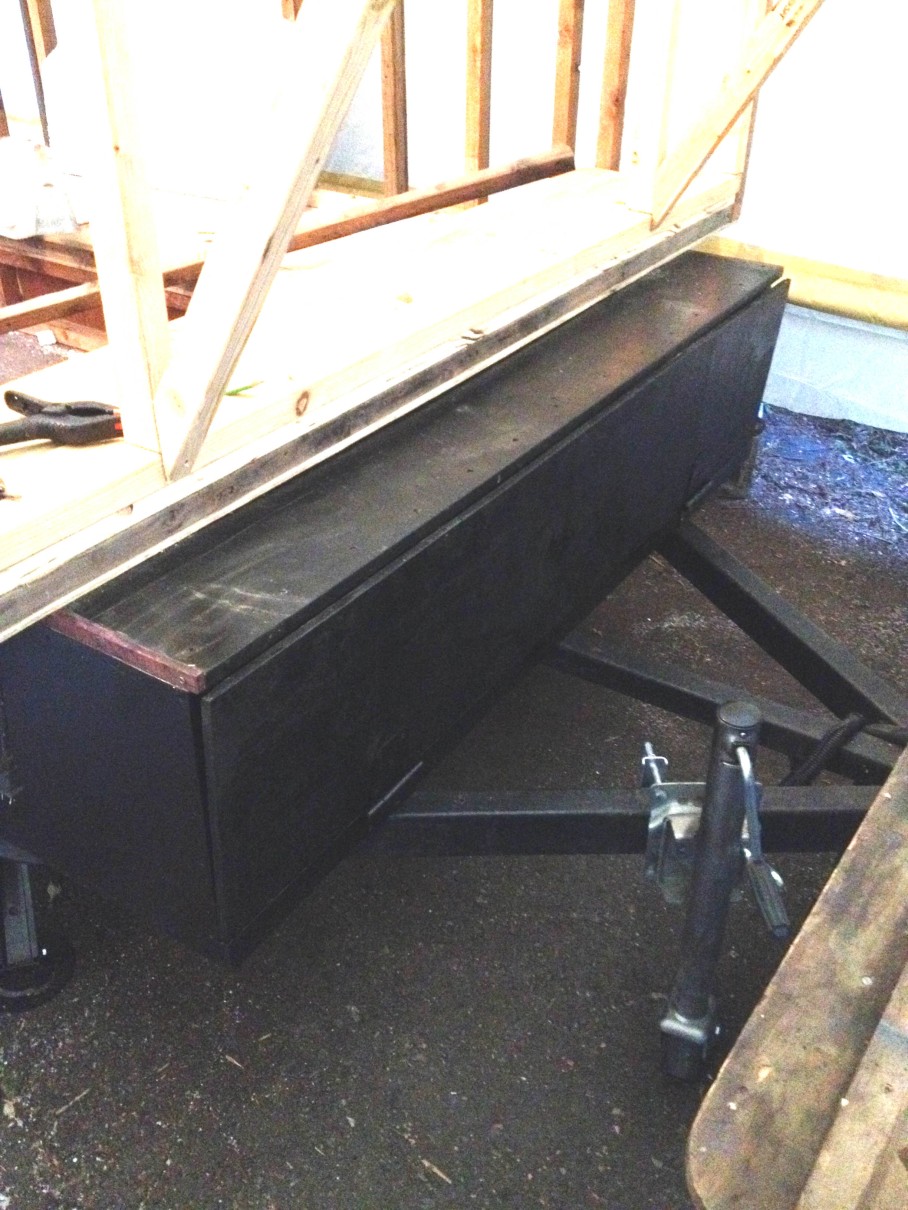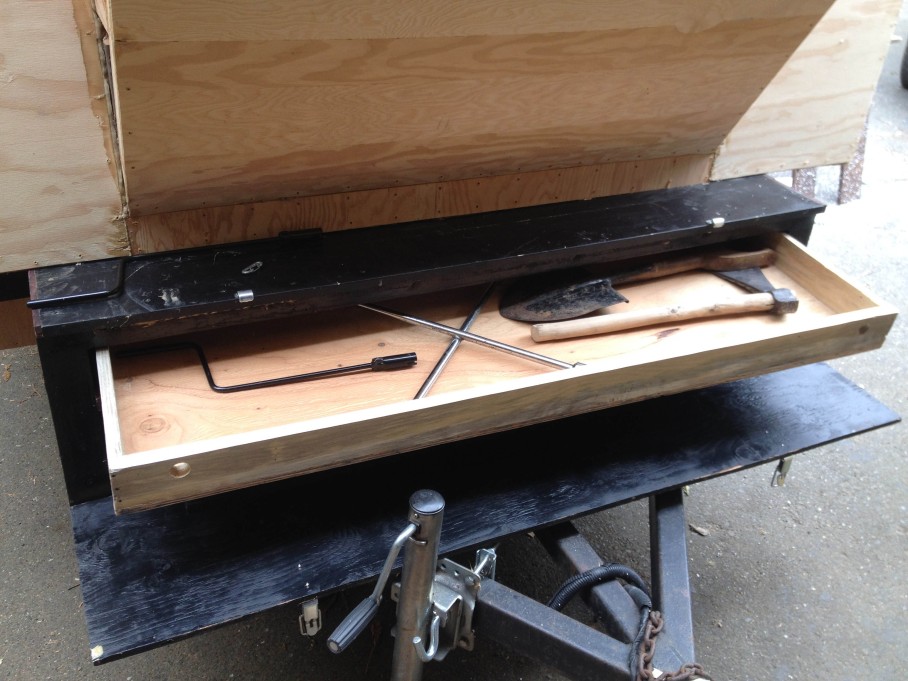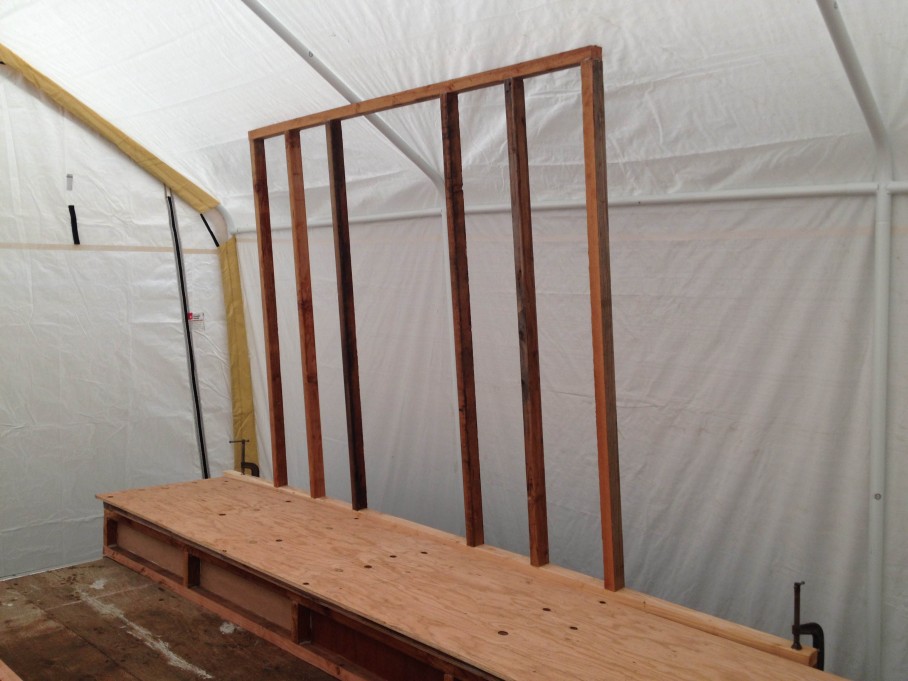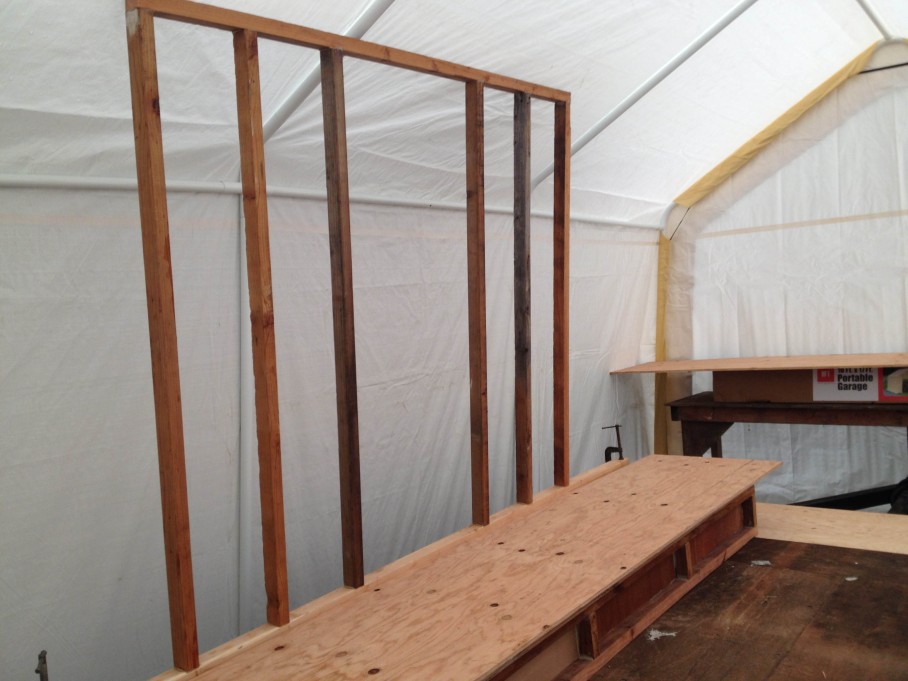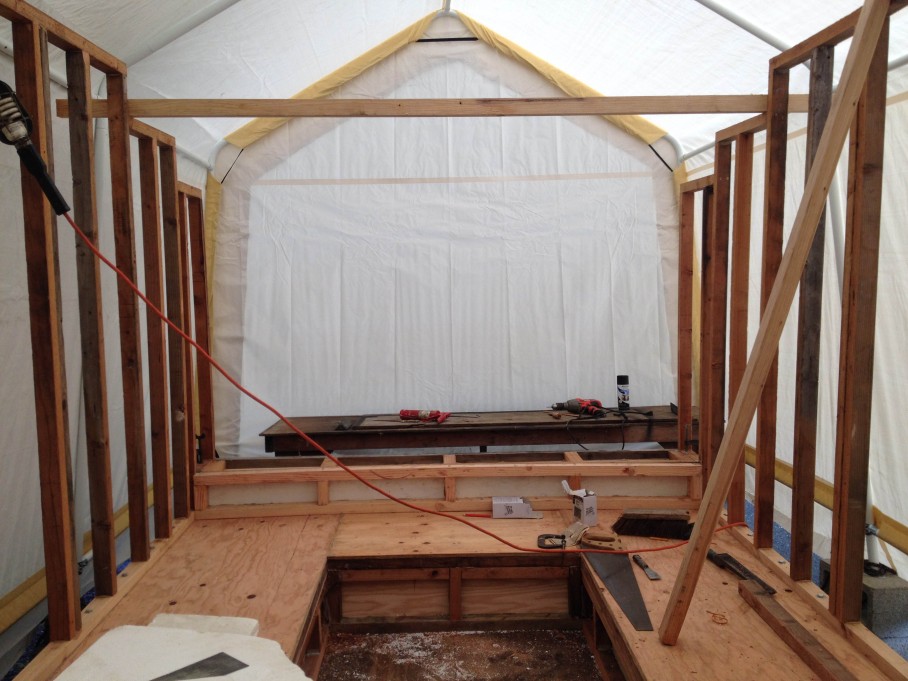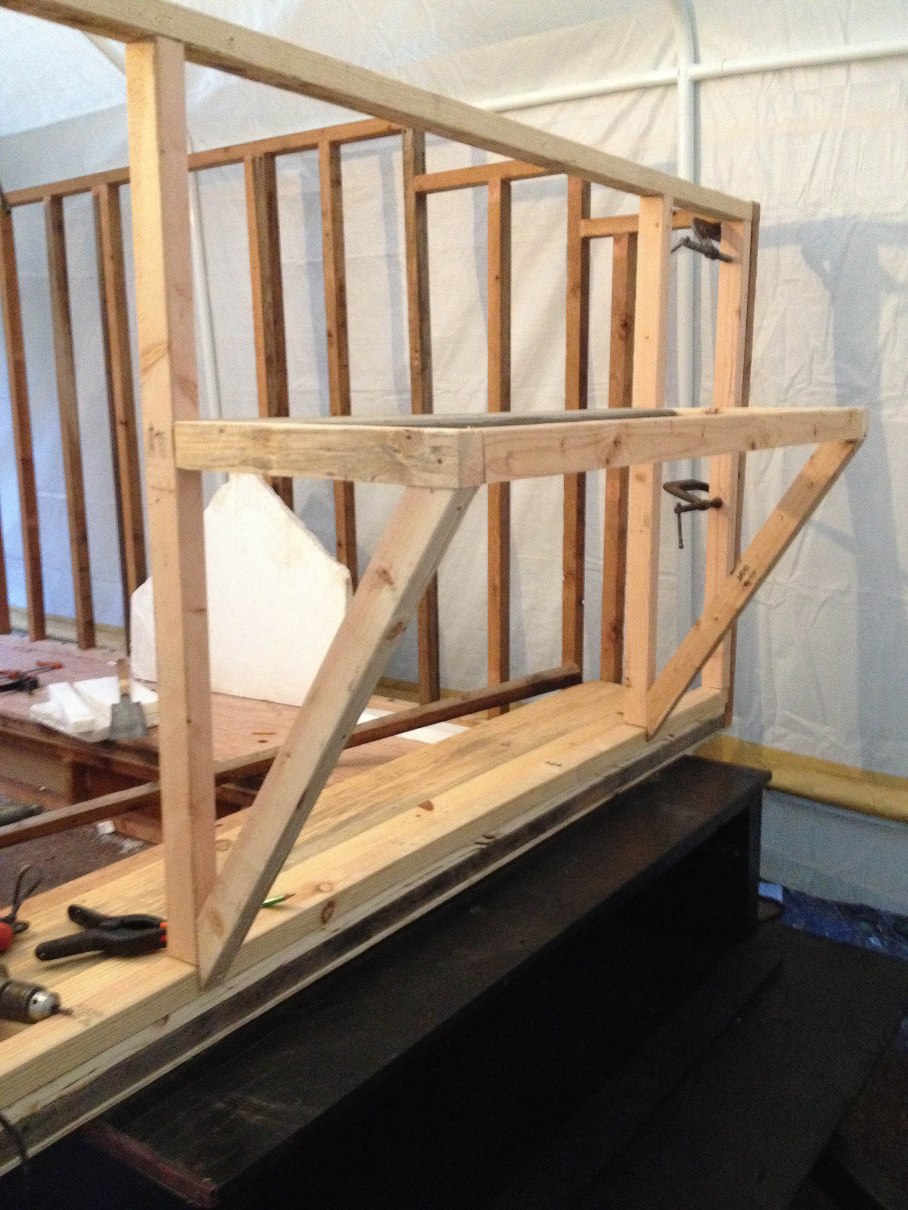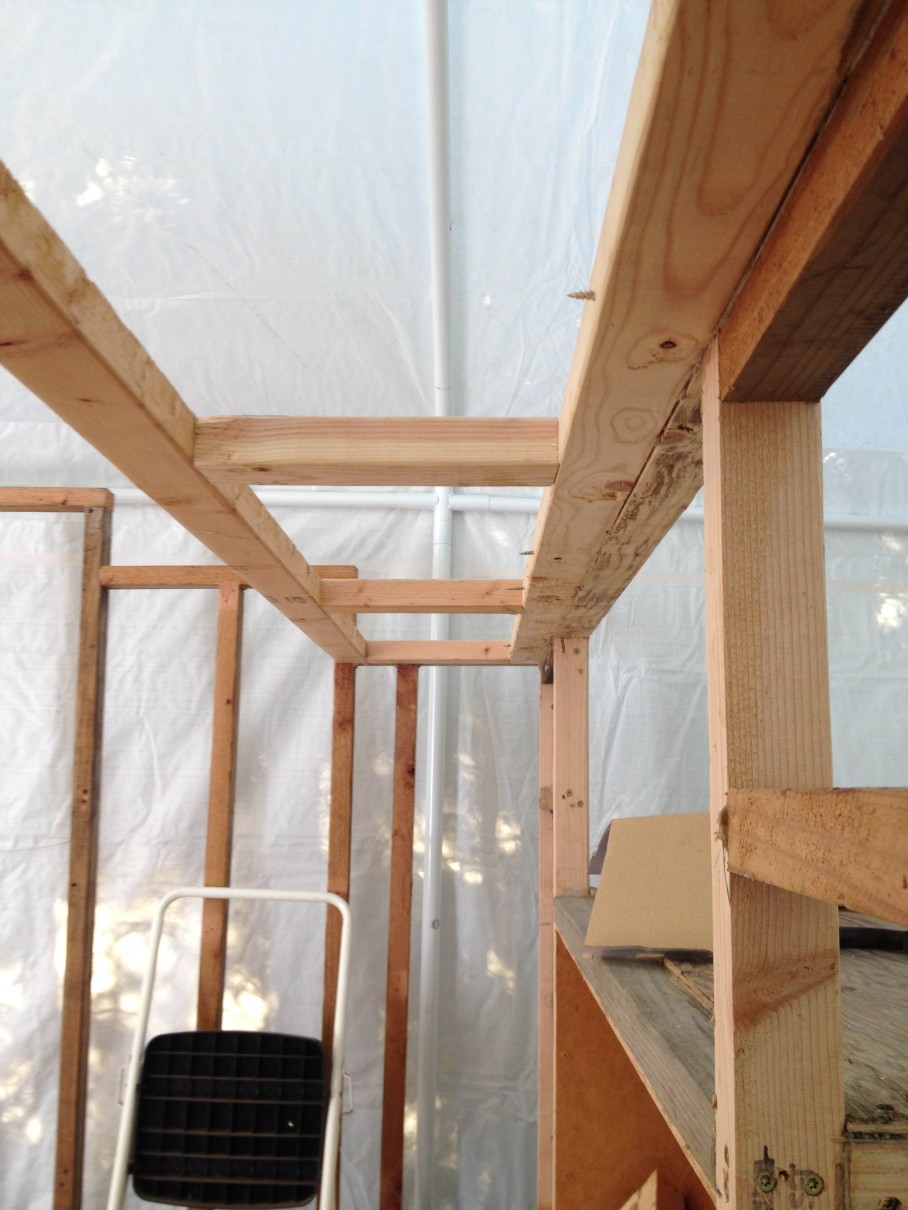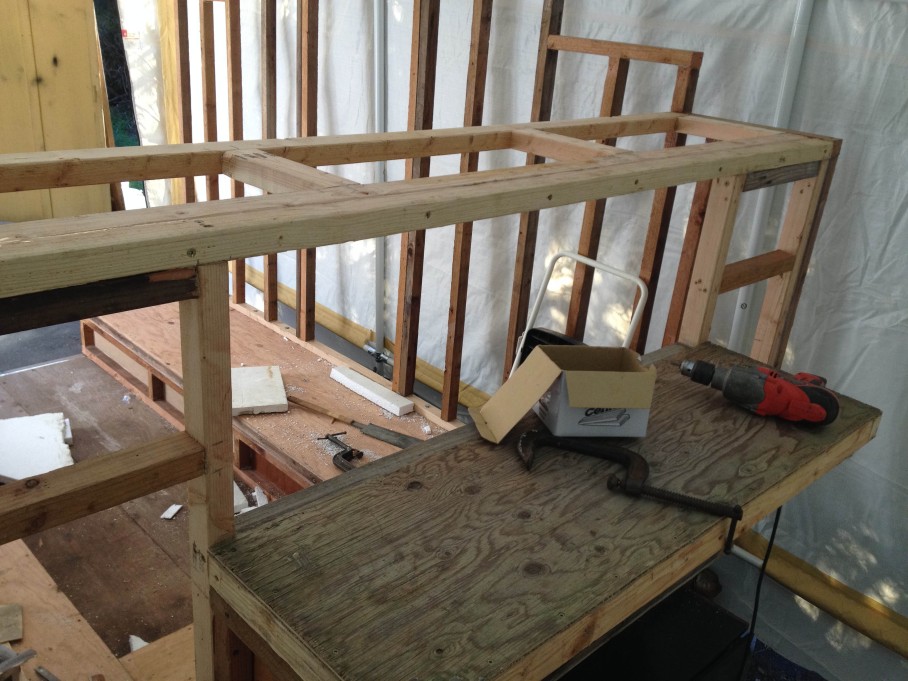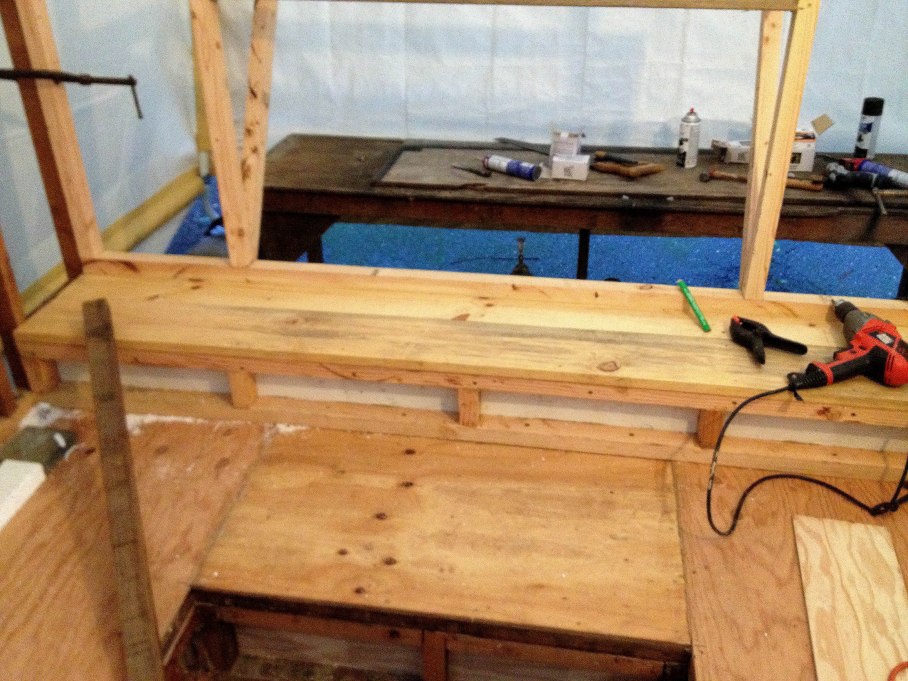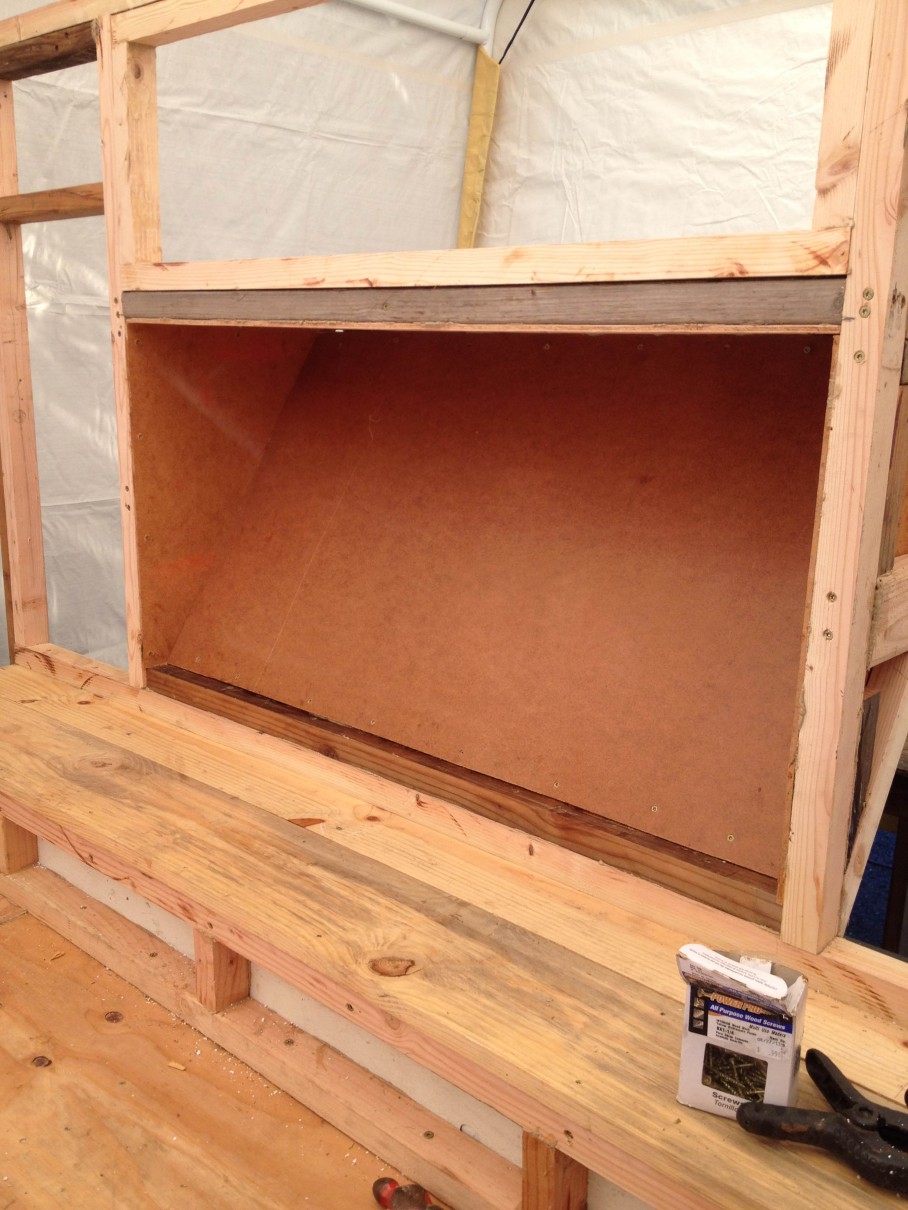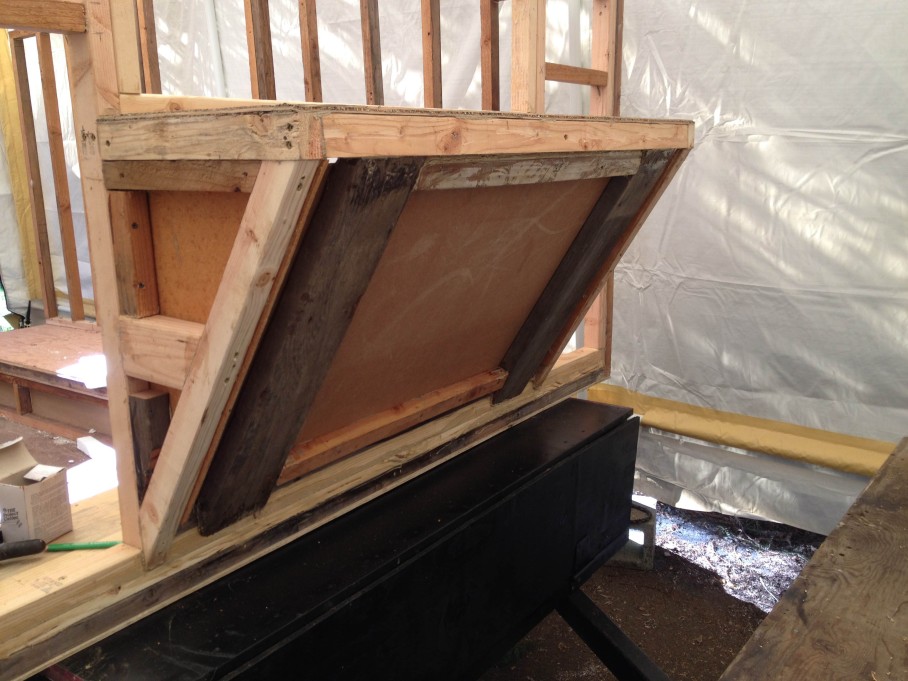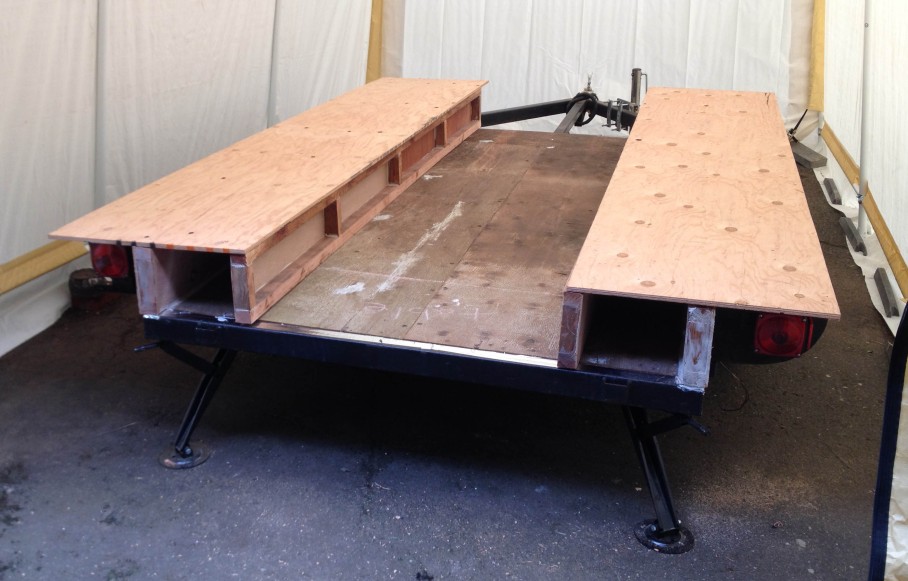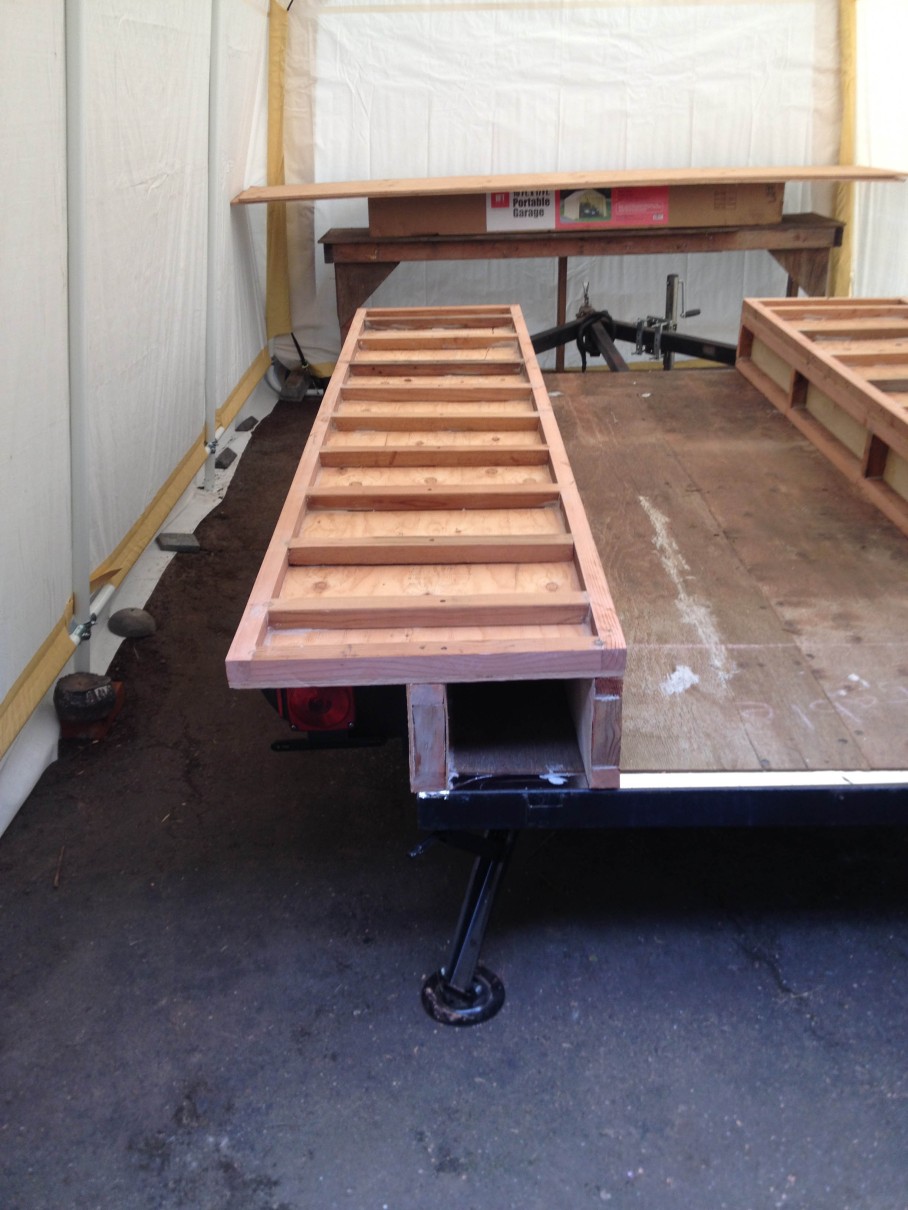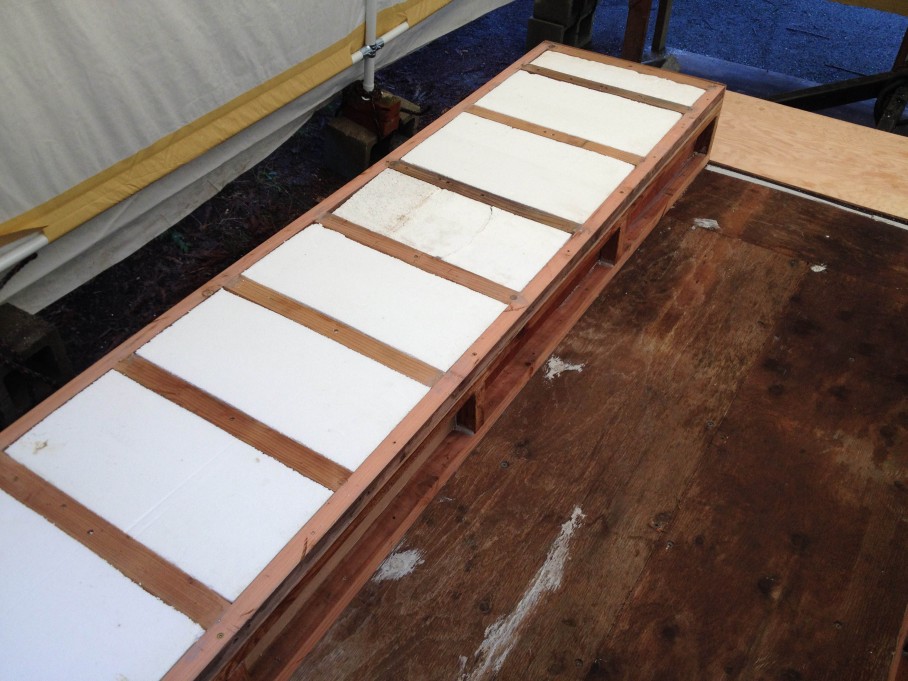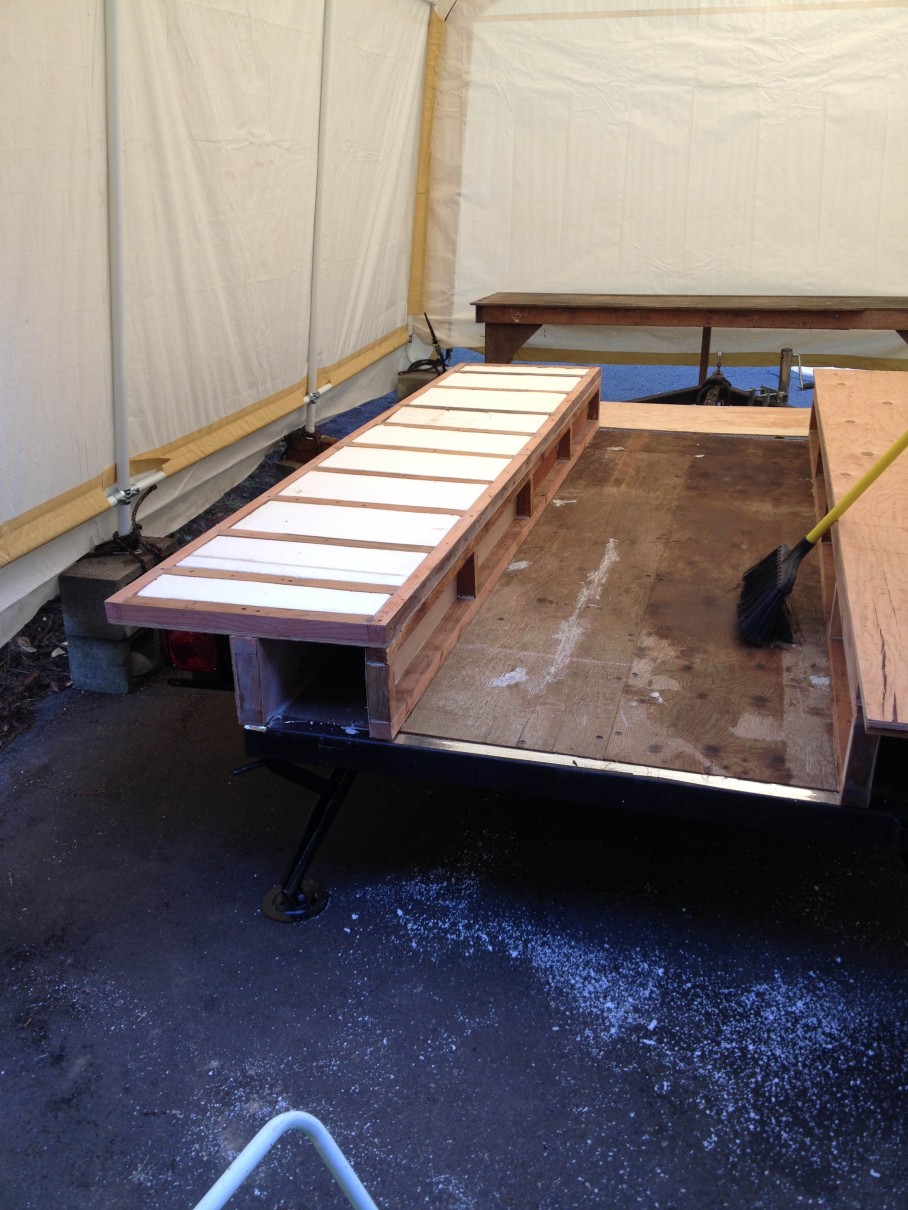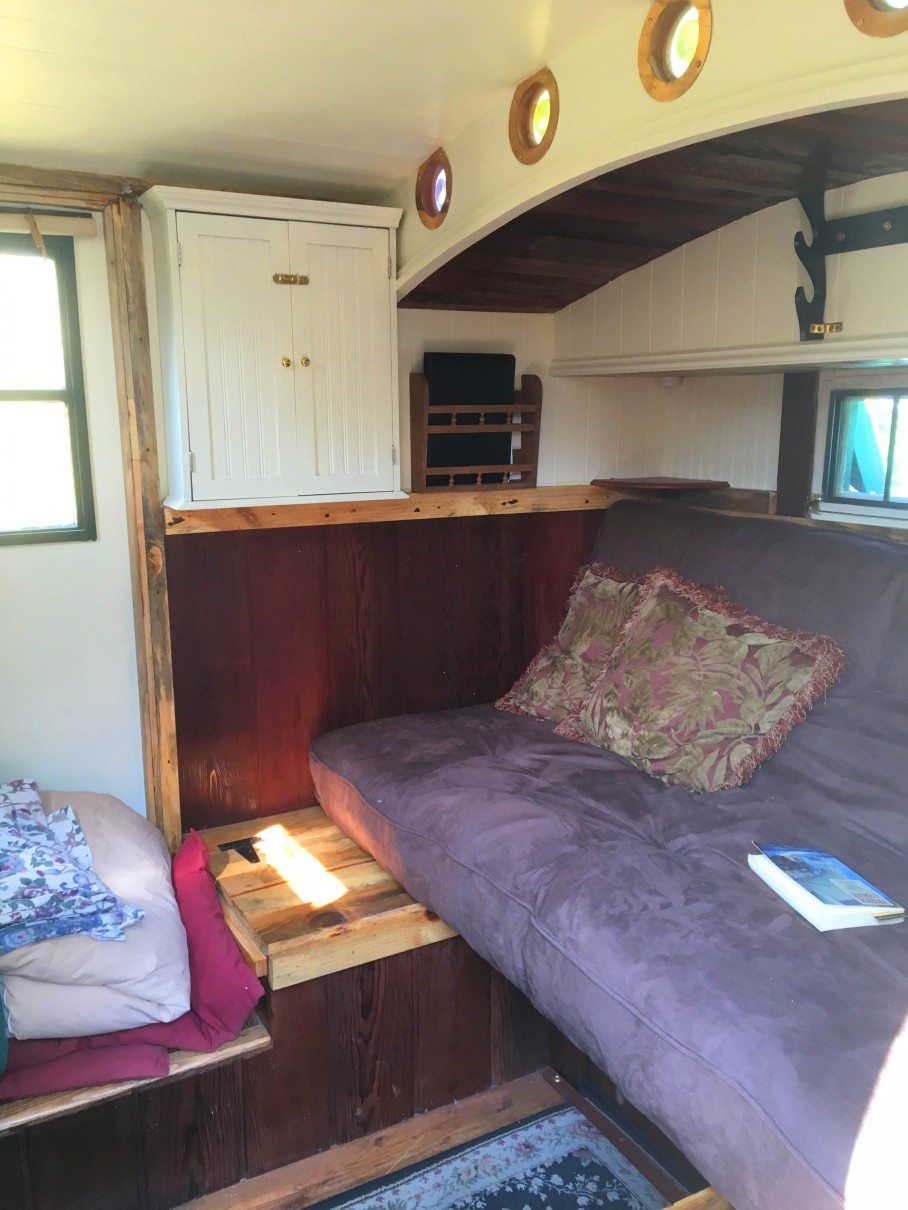
Inside view forward, port side. The oak flooring, pine trim and redwood wainscoting has been finished with polyurathane. Paneling has all been patched and painted. You can see some nice wood moldings on the forward bulkheads, the weapon rack is up (it fits two bows including my 6′ longbow), there is a runner carpet cleated down to the floor, corner shelf, magazine rack, medicine cabinet and super thick coil spring futon in couch position.
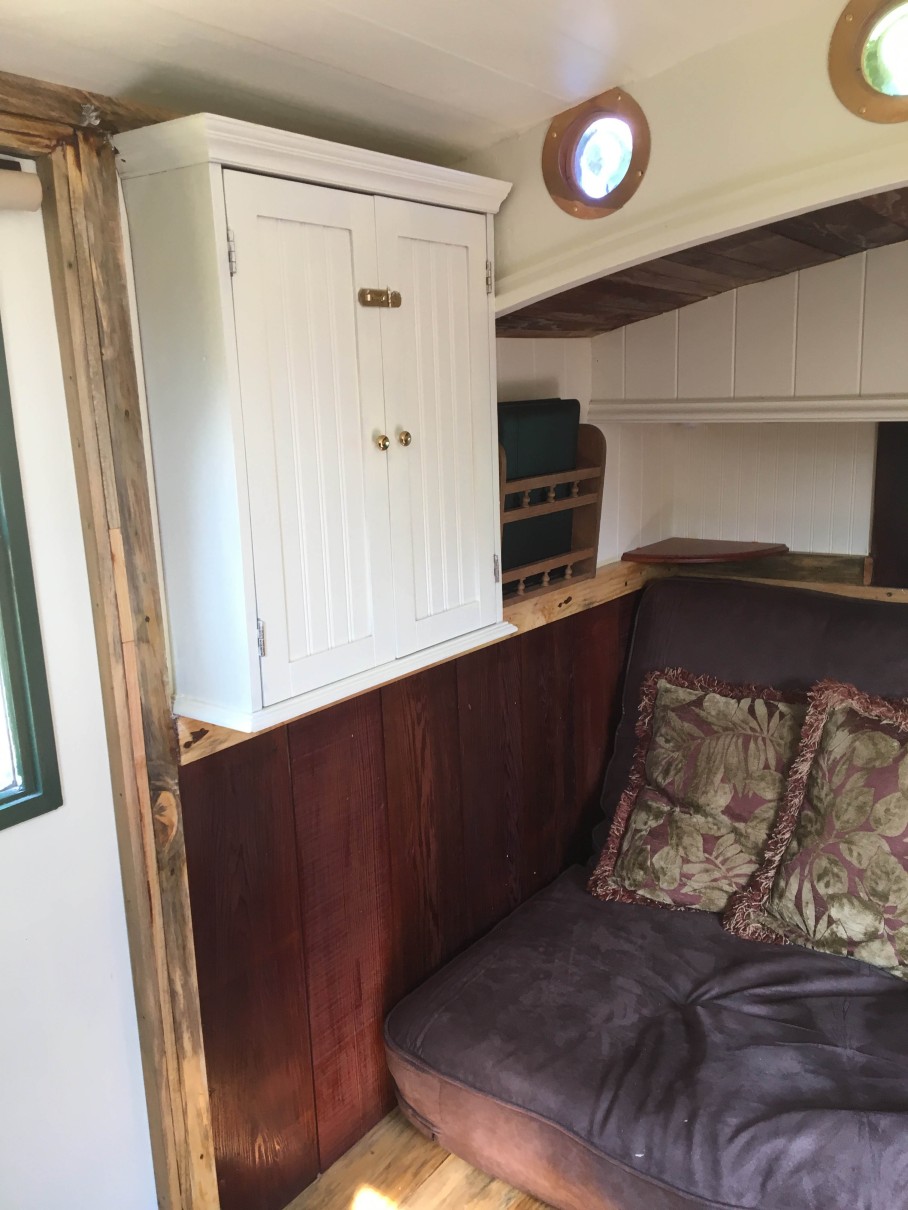
This little medicine cabinet was ripped in half on the table saw and the shelves positioned with the right spacing to…
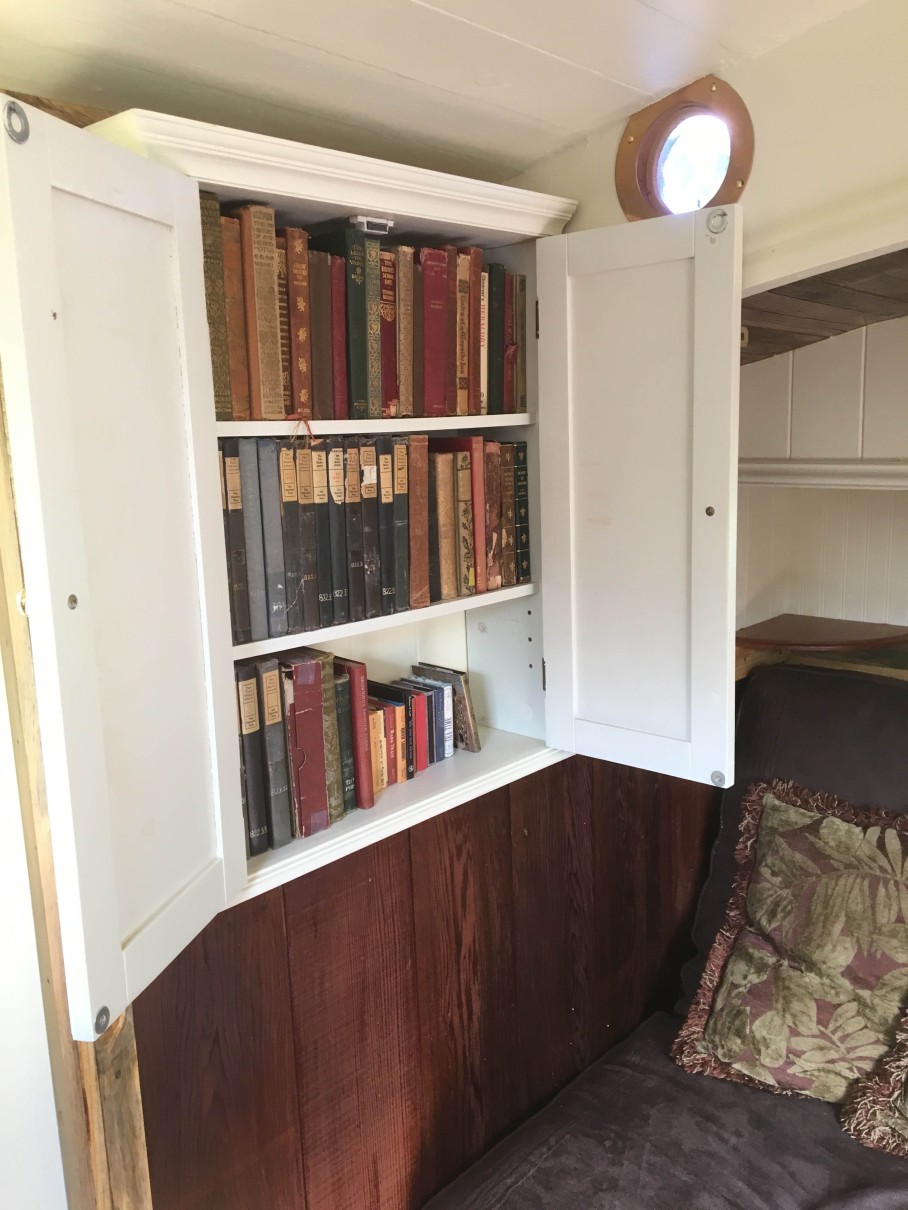
…make a library cabinet! I have been collecting these small edition books for years, and now there’s a place for them.
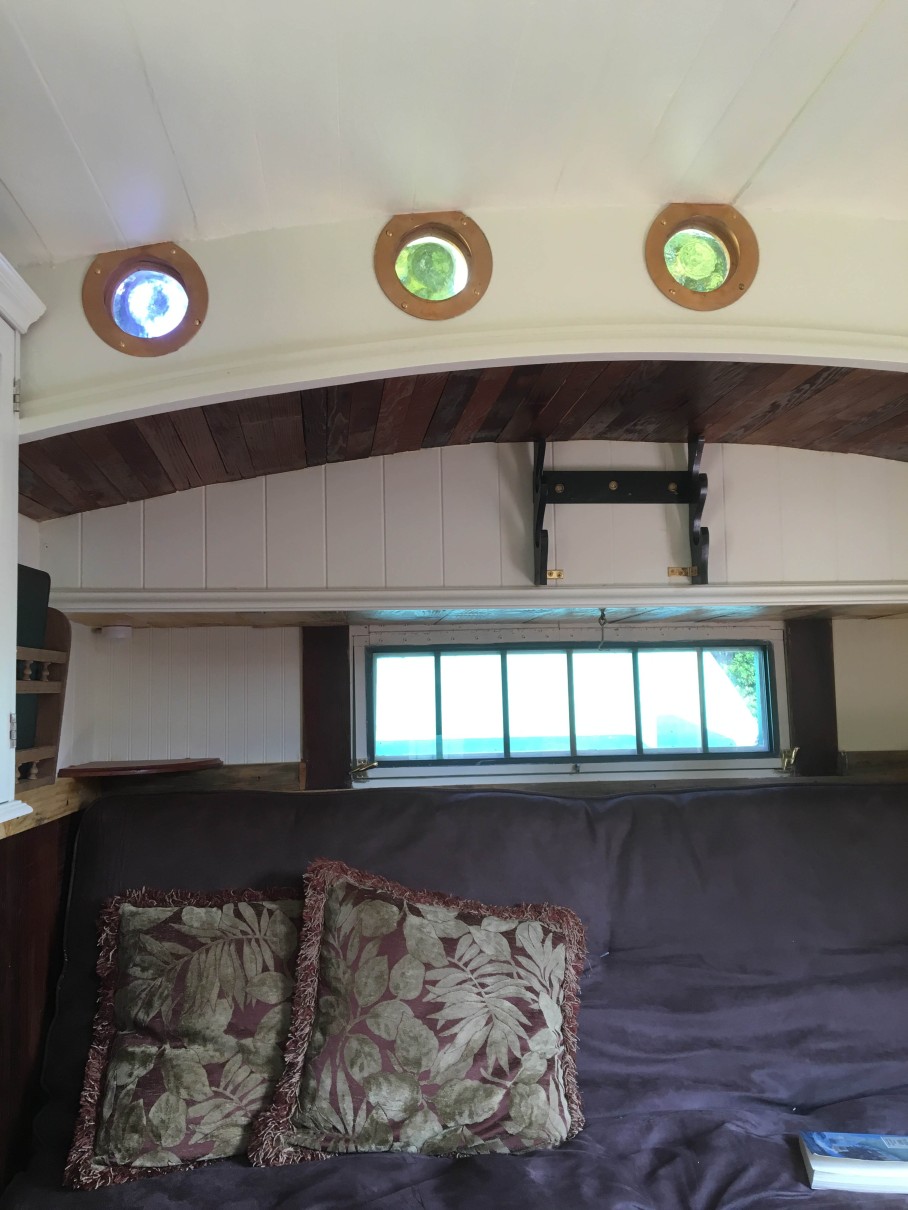
Inside looking forward. Of particular note, the portholes have been filled with colored glass. These were in fact candle stands made from recycled glass by Fire & Light, a local company, and which are easy to pick up at local flea markets. The glass is put in with glazing putty, the hole sides trimmed out with veneer, and then capped off with a custom brass ring (made by Mike Rude). When the sun shines from the front of the Coach, the colored light plays on the white ceiling. Very pretty.
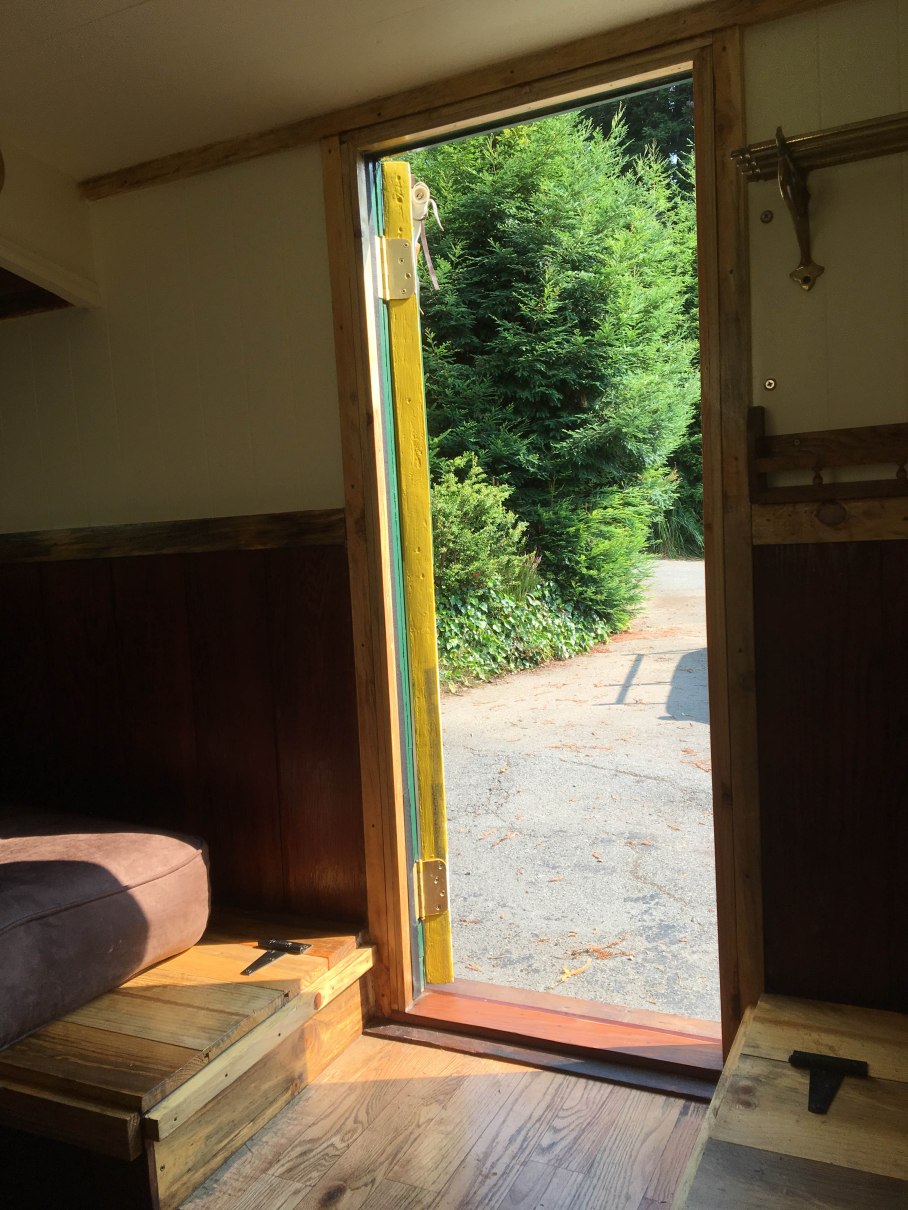
View out the starboard door, showing the oak flooring on the threshold, which has been waxed. You can also see two of the locker tops with their hinged lids. The two forward lockers store bedding, the port aft locker next to the wardrobe is for shoes and incidentals, while the starboard aft locker lid is actually a fake. The entire top lifts off and flips over to reveal a tile hearth for the wood stove.
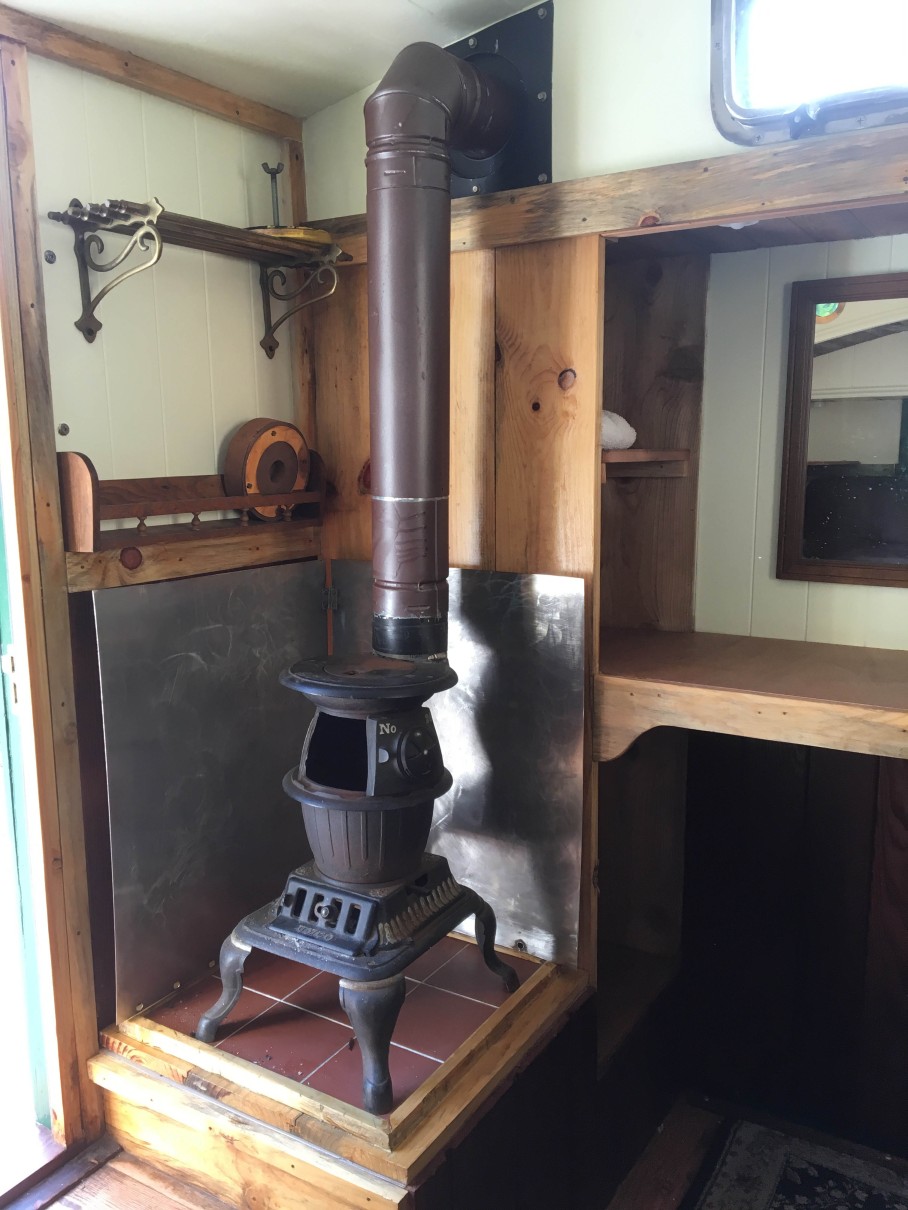
Here is the stove in place with chimney hooked up. You can see the tile hearth, and the heat shield I fabricated from heavy gauge stainless steel. Wood stoves in trailers are very tricky and I’m sure my setup would not pass muster with some people. The stove pipe is four inch double wall pipe that is rated for a one-inch clearance. It penetrates the side wall using the correct stove jack that provides three inches of clearance from any combustibles. Outside the chimney has plenty of rise to achieve a good draw, and it has the correct chimney cap. Before I can use the stove I need to strip and repaint it because someone painted it without using high temperature stove paint; I need to install spark arrestor screening in the chimney cap, and I need to install a carbon monoxide alarm inside the coach. With that, we will NEVER go to bed while the stove is burning. If ever we start to do any real cold weather camping I will look into getting a small airtight stove with a separate air supply.
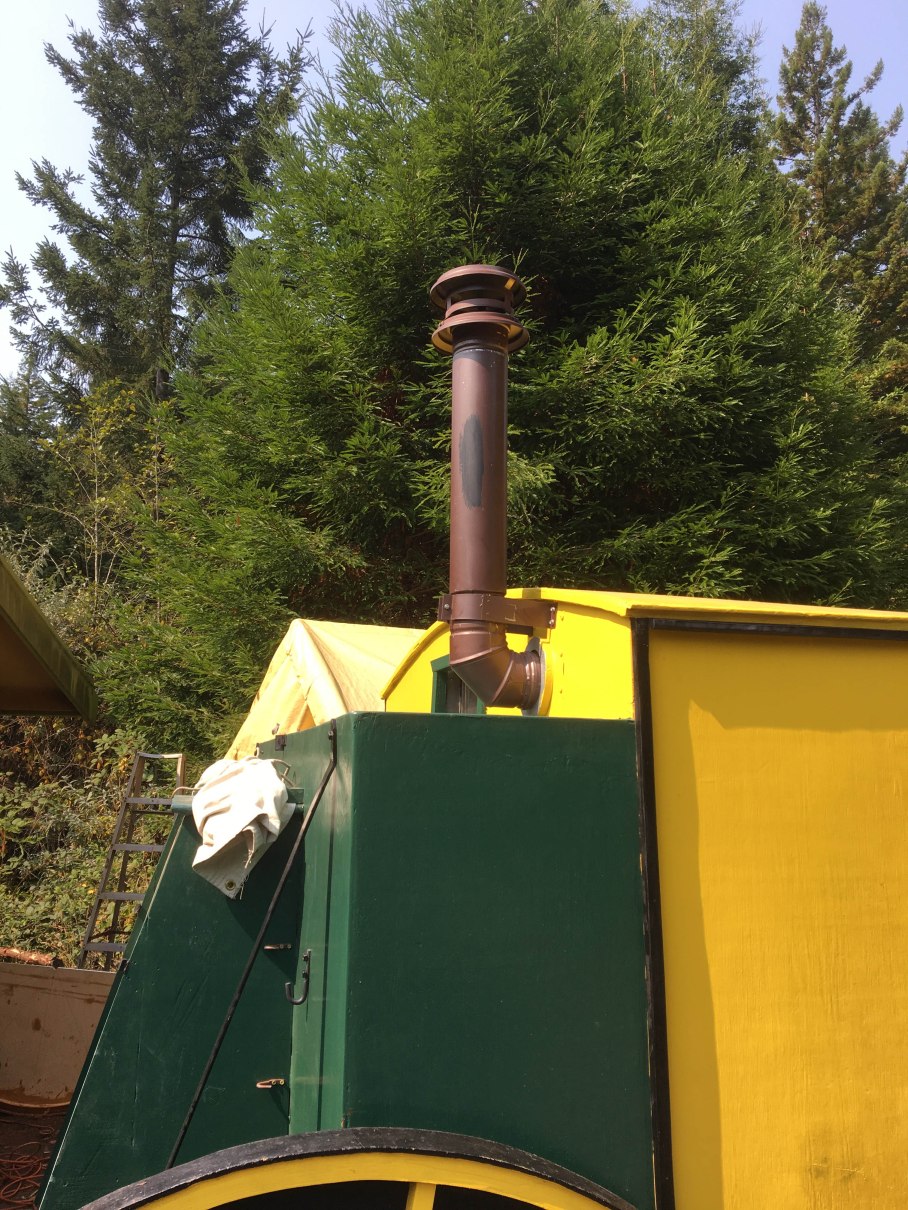
Here is the chimney set up with cap and bracket holding it straight. This setup is very sturdy, nonetheless we will not travel with the stove set up. Too much chance of it shaking loose and becoming a loose cannon on deck. The black splotch on the chimney is where I ran out of the lovely brown high temp stove paint and had to finish with black.
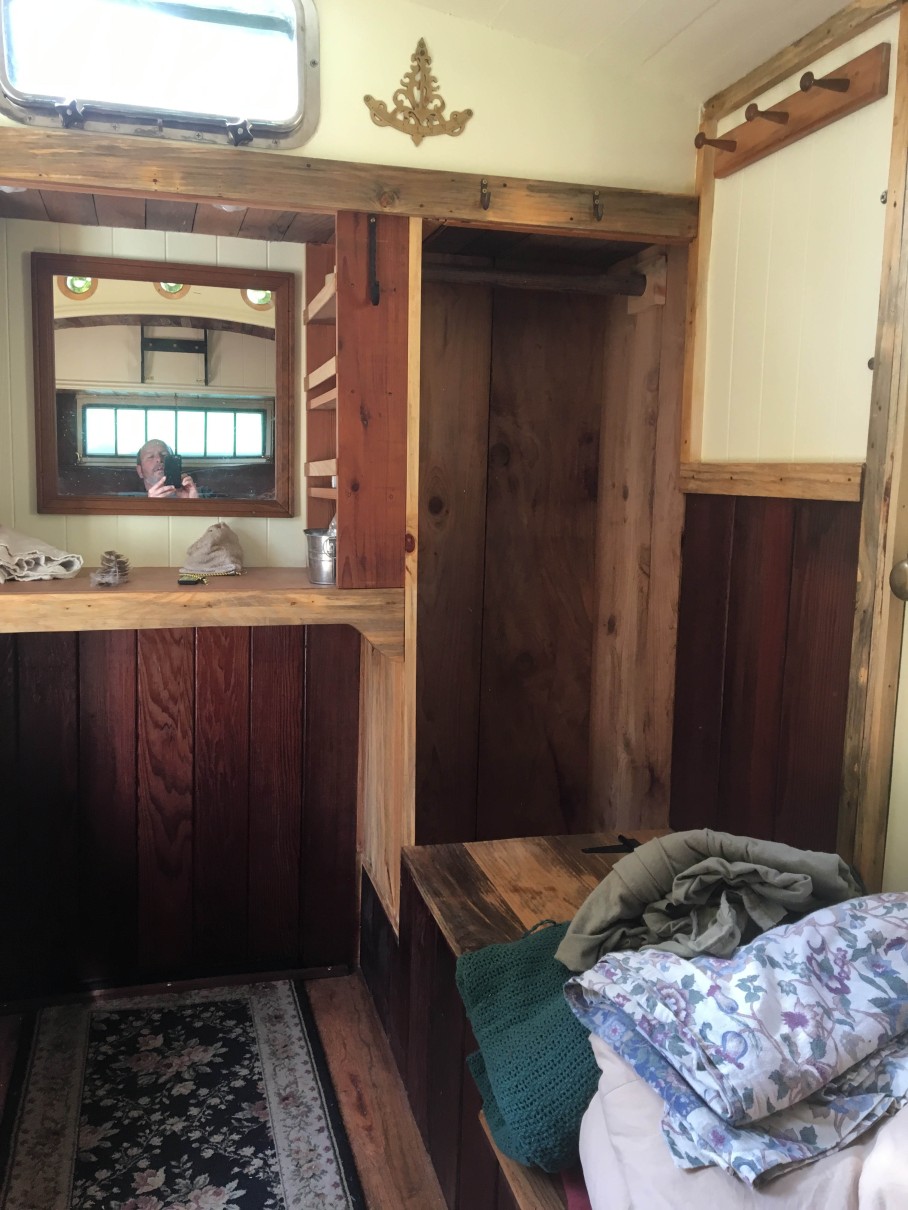
Here we are looking aft on the port side. The hanging wardrobe, coat hooks, hat hooks and back table are all visible. Note the inclinometer which will tell us if we are parked off kilter.
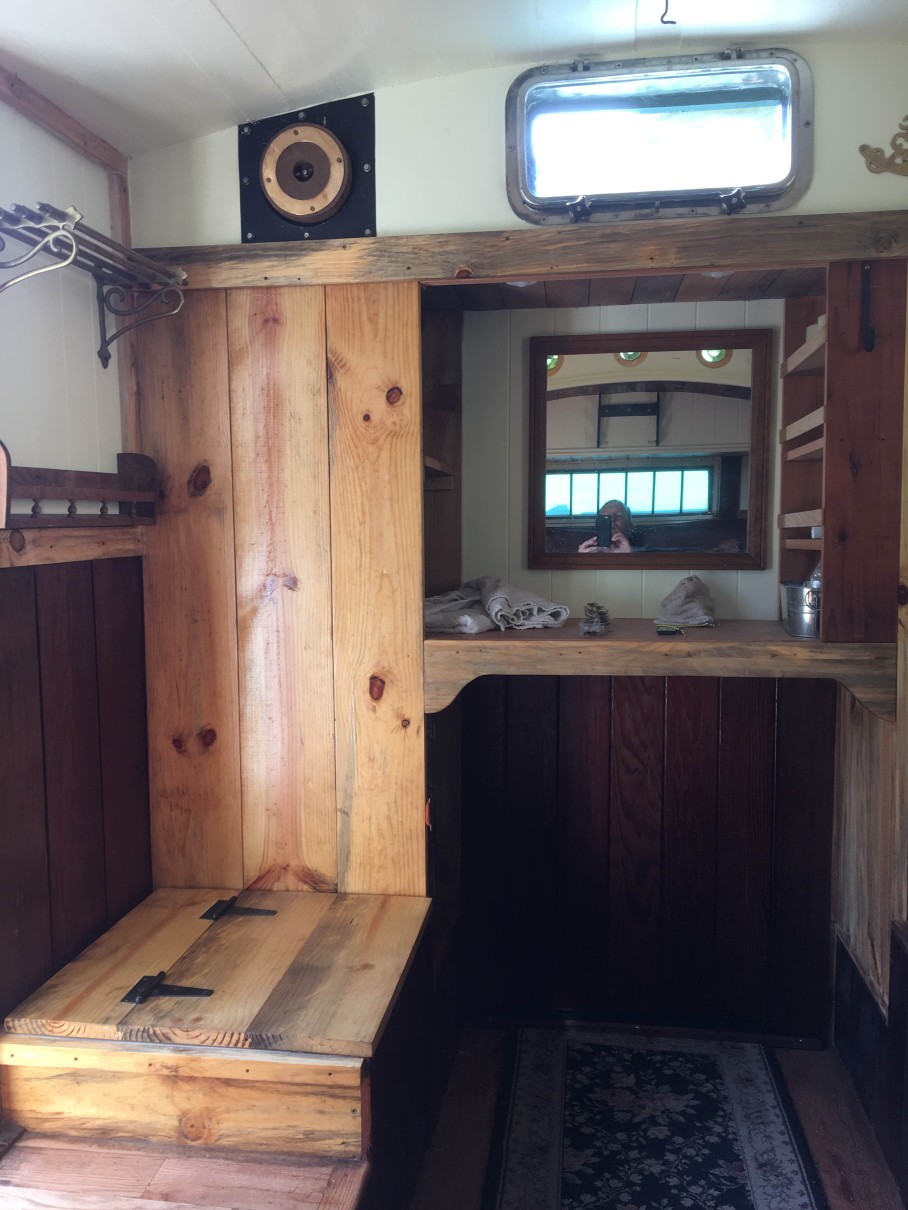
Looking aft to starboard. The hearth is hidden under the fake locker lid, and the stove jack is plugged for travel.
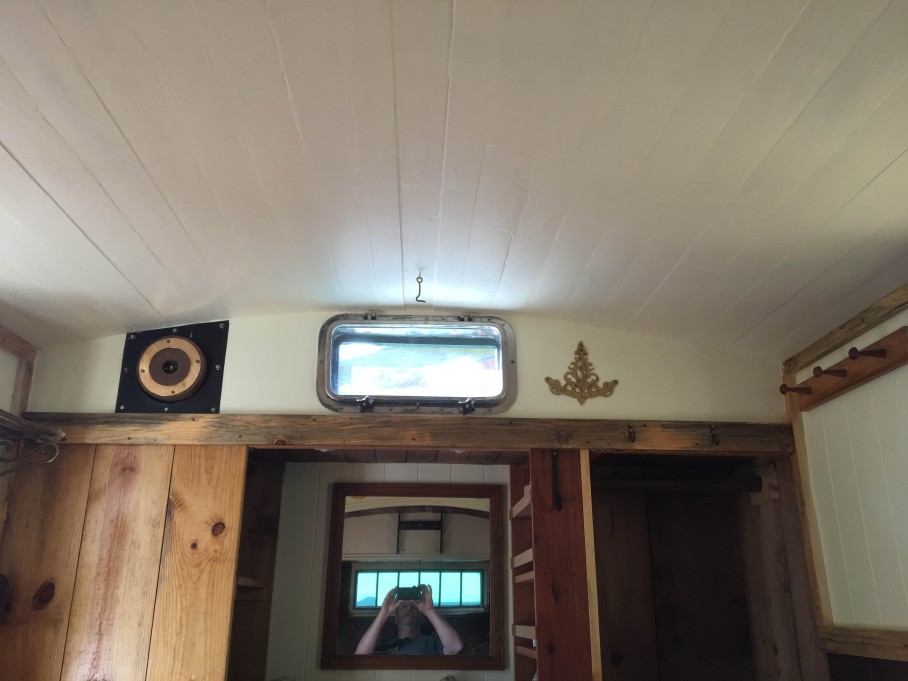
Shot of the ceiling looking aft
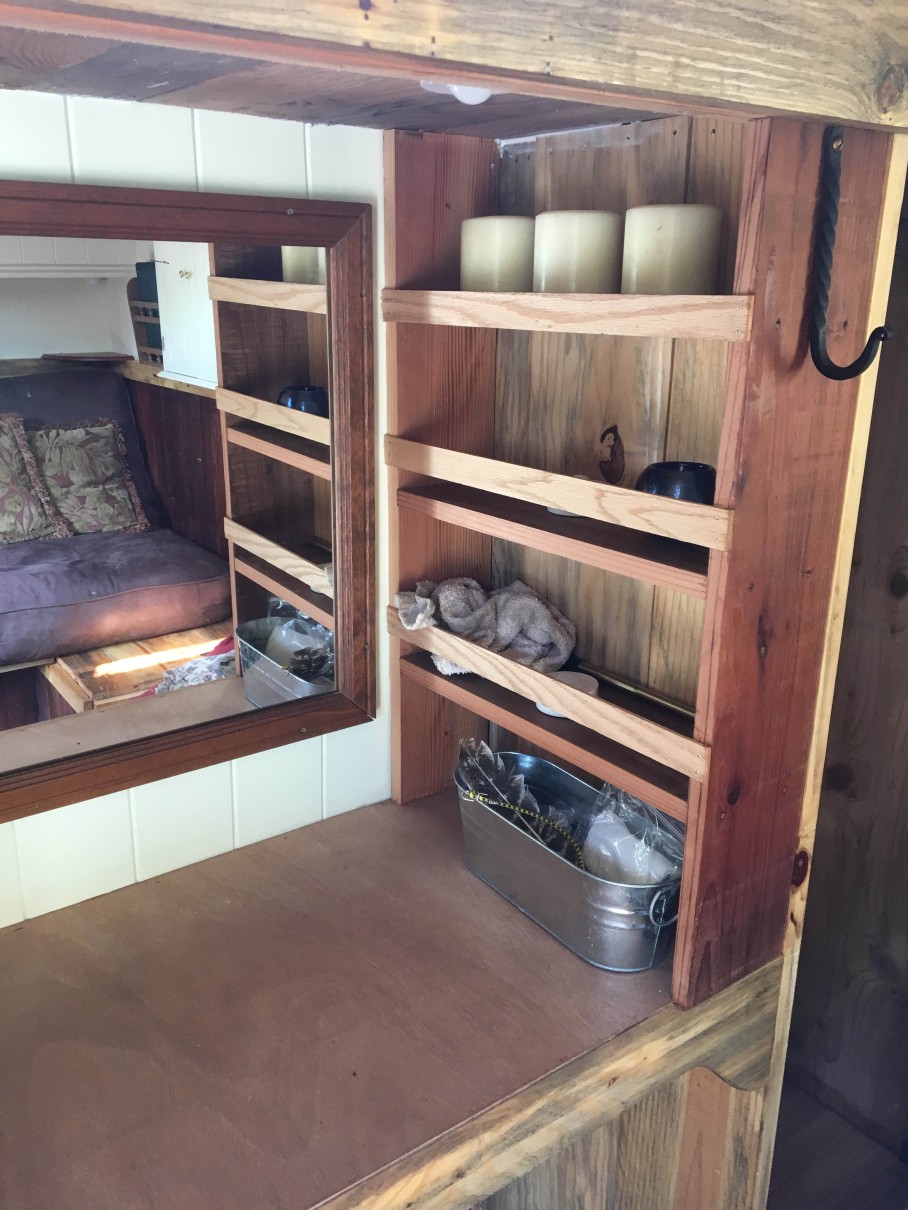
Here we are looking at the built in table and shelving. This is intended to be the dressing area or vanity for putting on makeup, etc. But it will also be handy for making tea using the wood stove. At the top you can see an LED light peeking out. These are cool little stickup lights we found at Costco that work manually or off a remote control. They can be dimmed to provide lighting control within the coach.
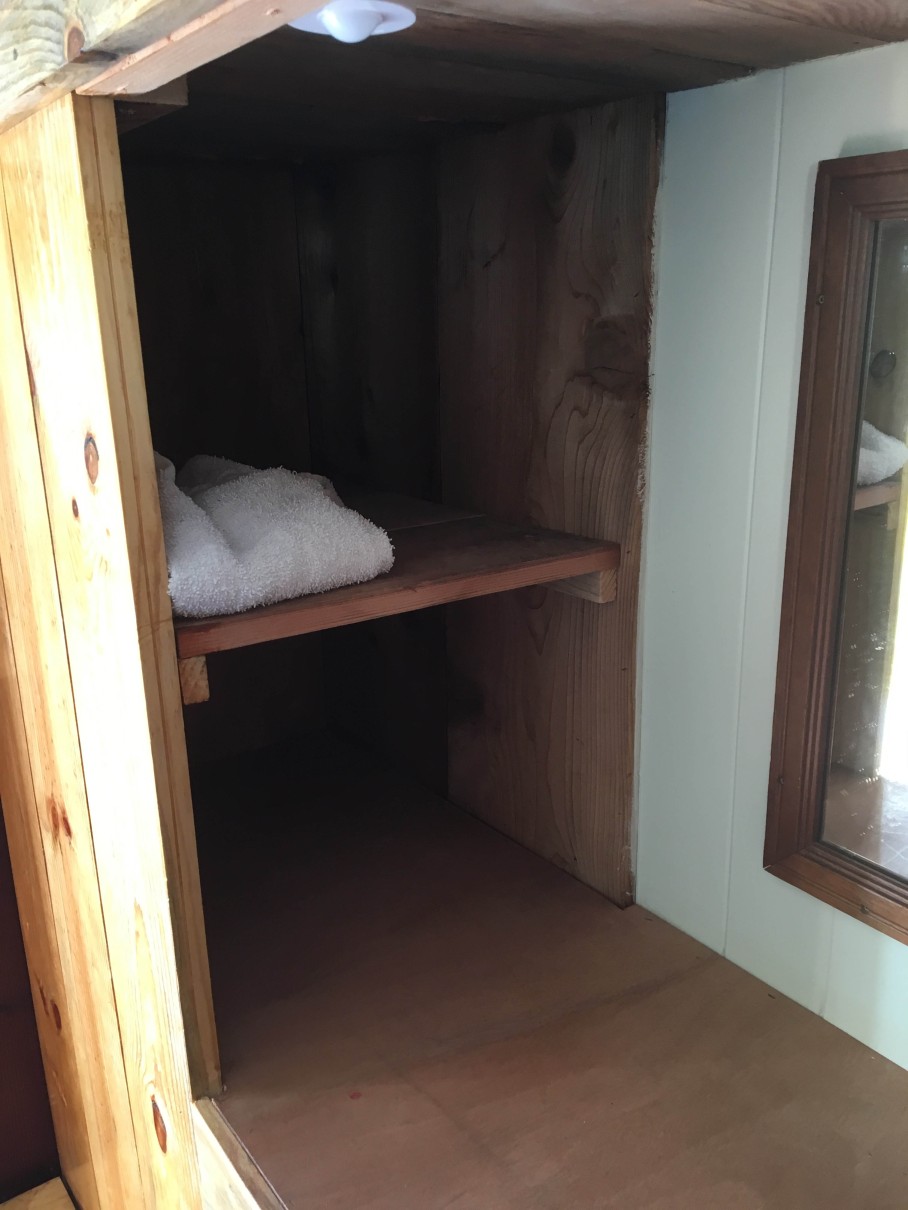
These cubbies are across the back table from the shelves; my wife and I get one each for our overnight bag or basket.
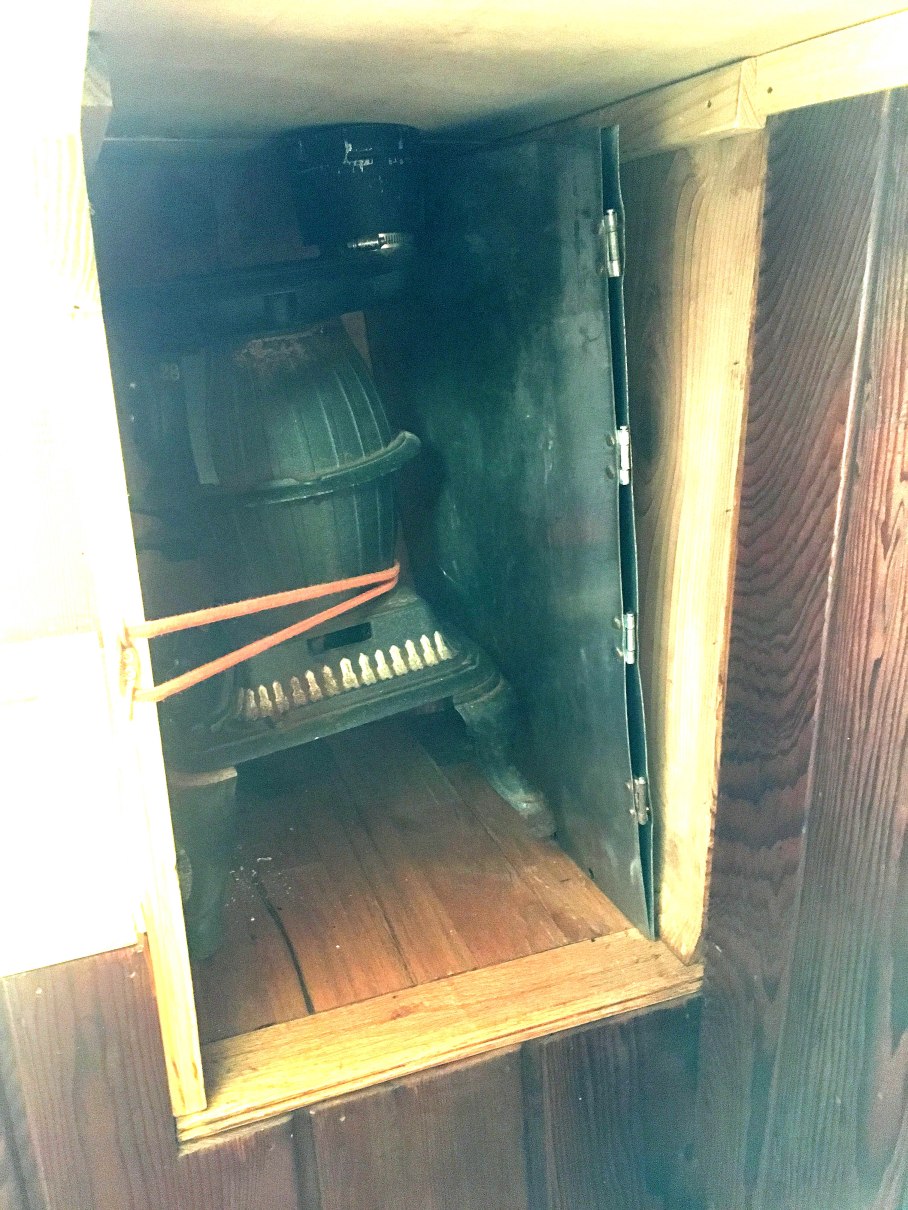
Under the cubbies is this space where the wood stove and heat shield are stowed when not in use. This is also where the Honey Bucket will be stowed.
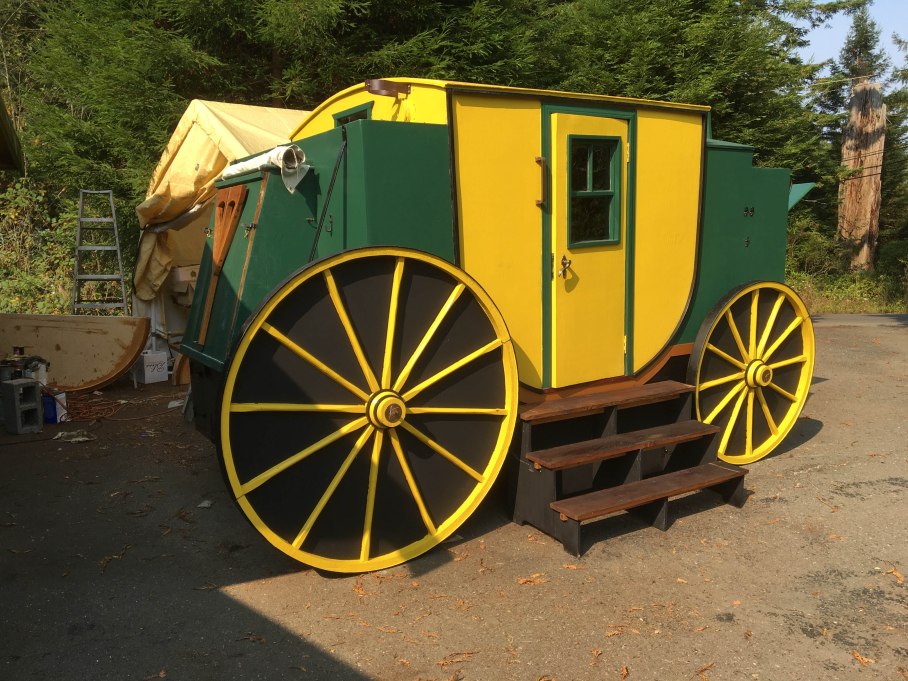
That’s pretty much it for now. I still need to finish the second pair of wheels and the second staircase. We will just have to use it some more to figure out what works and what needs tweeking. We will not be traveling far until I upgrade the suspension. When I get more photos of the Coach set up for camping, or better yet at a historical reenactment event, I will post them here. I hope you have enjoyed following along on the Coach build, and don’t hesitate if you have any questions. ‘Possum
